Life in Coomacka

Sunday, August 27, 2023



Sunday, August 27, 2023

SHE is back home in Guyana, and the only thing that was missing as her feet stepped on Guyana’s soil once again after 17 long years, was a fanfare by the Guyana Police Force Band, followed by Eddy Grant serenading her with his appropriate composition, “Georgetown Girl.” The return of Dr. Wanda Chesney to her native land after an absence of 17 years was no doubt a bit emotional for her and her loved ones, including former coworkers at the TV Evening News team where she worked for many years. As one of her former colleagues at the TV Evening News, I can say without fear of any contradiction that Wanda Chesney was loved and respected by all her coworkers, not only because of the way she performed her duties professionally but also by the way in which she interacted with her colleagues of all levels at the Evening News. She
displayed respect, and it was returned to her many times over.
Dr Wanda Chesney’s recent return to her native Guyana was an exceptional joy, especially for her former media colleagues at the now defunct Tony Vieira Television Evening News, nightly broadcasts, as well as her Adventist sisters and brothers in Georgetown who knew her well. To have a media worker like Dr Wanda Chesney’ is to have the best in the media as a coworker and team member, working with pride to inform the nation of what has happened, what did not happen, which should have happened, what is happening, and why it is happening; all these elements, based on investigation from the most reliable and trusted sources. The good journalist is well aware that there are individuals within the society who would want to use bribes and other unethical means to corrupt the sanctity of the media. Principled media operatives stay far away from such persons. The good media operatives usually stand tall and strong and, after a while, build up a reputation of true professional ethics. After that, they do not have to face the evil people who,
There was also no assignment which was so demanding that she ever backed away from. In fact, the more challenging it was, the quicker she would be ready to be transported to the scene, whether safe or even dangerous. That was her Modus Operandi, the very hallmark of her reports over the decades. As far as I know, Dr. Chesney never produced a news item with a biased slant. Straight-up, unadulterated facts are what she presented to the TV News Television viewer.
many with deep pockets, feel that they can buy their corrupt plans from weak media operatives.
As a journalist of high moral standards, Dr. Wanda Chesney is fearless and also fair in all her reports. She performs her job without fear or favour; a true professional and someone who is not readily or in any way easily misinformed. She researches her stories and reports thoroughly before publication.
In Guyana, as in many other countries, some try to influence reporters and other members of the media; they soon find out that there are those who are truly professional, and no matter what ‘goodies’ might be dangled before them, for the tempter, it is all an exercise in futility.


A total waste of their corrupt minds. One can recall many of the journalistic exploits of Dr Wanda Chesney when she was attached to the TV Evening News. In a way, it could be said that Wanda Chesney was probably already working on her PhD while she was a reporter at the Evening News. Reports of the highest standards were what she presented to the public when she was a reporter before she received her doctorate.
Many of her reports on the local TV Evening News were sometimes somewhat disturbing to some members of the public, but not because Dr. Chesney’s presentation was biased, but because they were factual. Some incidents which journalists have to report are not always pleasant. In fact, most are unpleasant for the reader or viewer. There were some of her TV News which could only be classified as “graphic.” An example is having the cameraman record human faeces pouring out of one of the pipes at the Georgetown Public Hospital Corporation. Such a situation was obviously harmful to the patients in the adjacent wards and also to the visiting public as well as the neighbouring business places and residences. Within days after that accurate report was broadcast on the Evening News, the problem was addressed with the necessary repairs to the faulty system. I can recall the publisher of The Evening News, Tony Vieira, congratulating Wanda Chesney for producing that news item which resulted in improving the conditions at the Georgetown Public Hospital Corporation. That Wanda Chesney report improved the quality of life for the patients at the hospital, the doctors, nurses, ward maids and other ancillary staff members at that large Medical institution in Georgetown.
Many of the stories which Wanda Chesney presented on The Evening News during her tenure there, had a positive effect on the Guyanese people. And if those stories did not change the wider world, they certainly changed Guyana for the better.
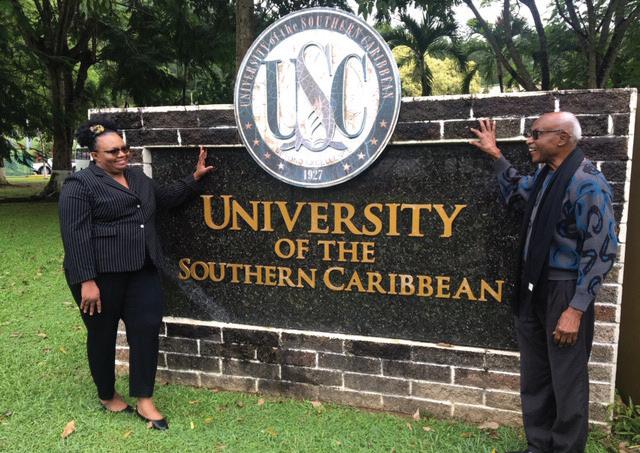
SMALL business owners who are now starting and have intentions to launch their products can now find the ideal spot for it at Feme, a collaborative space. It is a safe, reliable and comfortable location to display
Fung is experienced in managing several businesses. She provides daily updates of sales transactions on Google spreadsheet and does the marketing of the products on social media platforms with weekly payouts and no
and interesting décor.
The 32-year-old told the Pepperpot Magazine that from a young age, she didn’t like the idea of working for other people, which motivated her to become a small business owner.
she managed to endure some hardships in maintaining balance whilst dealing with
win solution for small business owners, and I am here to provide quality service at
on social media platforms with a lot of colour to keep it fresh and to garner a wider
your products.
Feme is a store with shelves that can be rented to display products. It also serves as a pick-up location and strategically located at 22A Shell Road between Lamaha and Alexander Streets, Kitty.
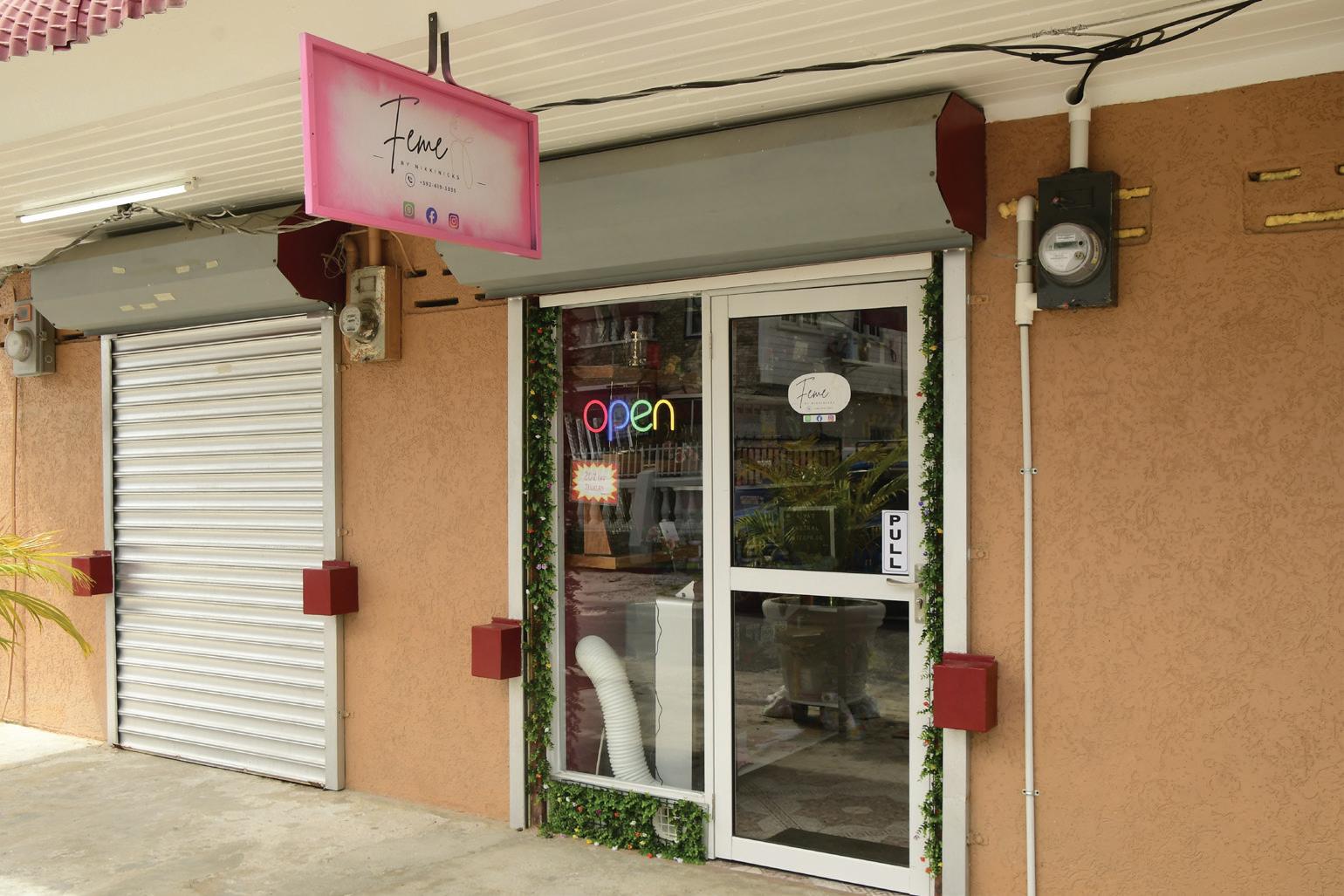
The owner, Nickita Fung, a Guyanese born and raised in Meadowbrook, Georgetown, aims to provide the best co-op experience for customers.
contracts.
After facing many failures in establishing small businesses, Fung was very determined to make something finally work out for her and the idea of Feme was born.
Feme opened its door to the public just over four months ago and it is quite impressive what Fung has done with just a bit of space. She managed to transform it into a store with lots of shelves
“I always wanted to have my own business. Working for myself, by myself is appealing to me because it allows me to utilise my potential and work toward my goals and with Feme, I am getting there,” she said.
Fung related that her love for business keeps her going and she likes what she does for a living.
After experiencing several business failures when she started at 28, over the years
business ventures.
However, Fung first launched her storefront small business, NikkiNicks, selling custom-made jewellery, accessories, skincare, lingerie and all feminine products.

The first anniversary will be celebrated next year and all products are sourced both locally and overseas for the display shelf at her own store.
“Often business isn’t always good, all the time, and to tie small business owners to a contract is burdensome, so in my store there are no contracts. If a business fails and the owner wants to clear the shelf at any time, they are free to do so. Feme is a win-
an affordable price with no hidden fees,” she said.
Fung told the Pepperpot Magazine that small businesses can survive and at Feme, its shelves cater for women-owned businesses and more than 30 such businesses have their products displayed for sale.

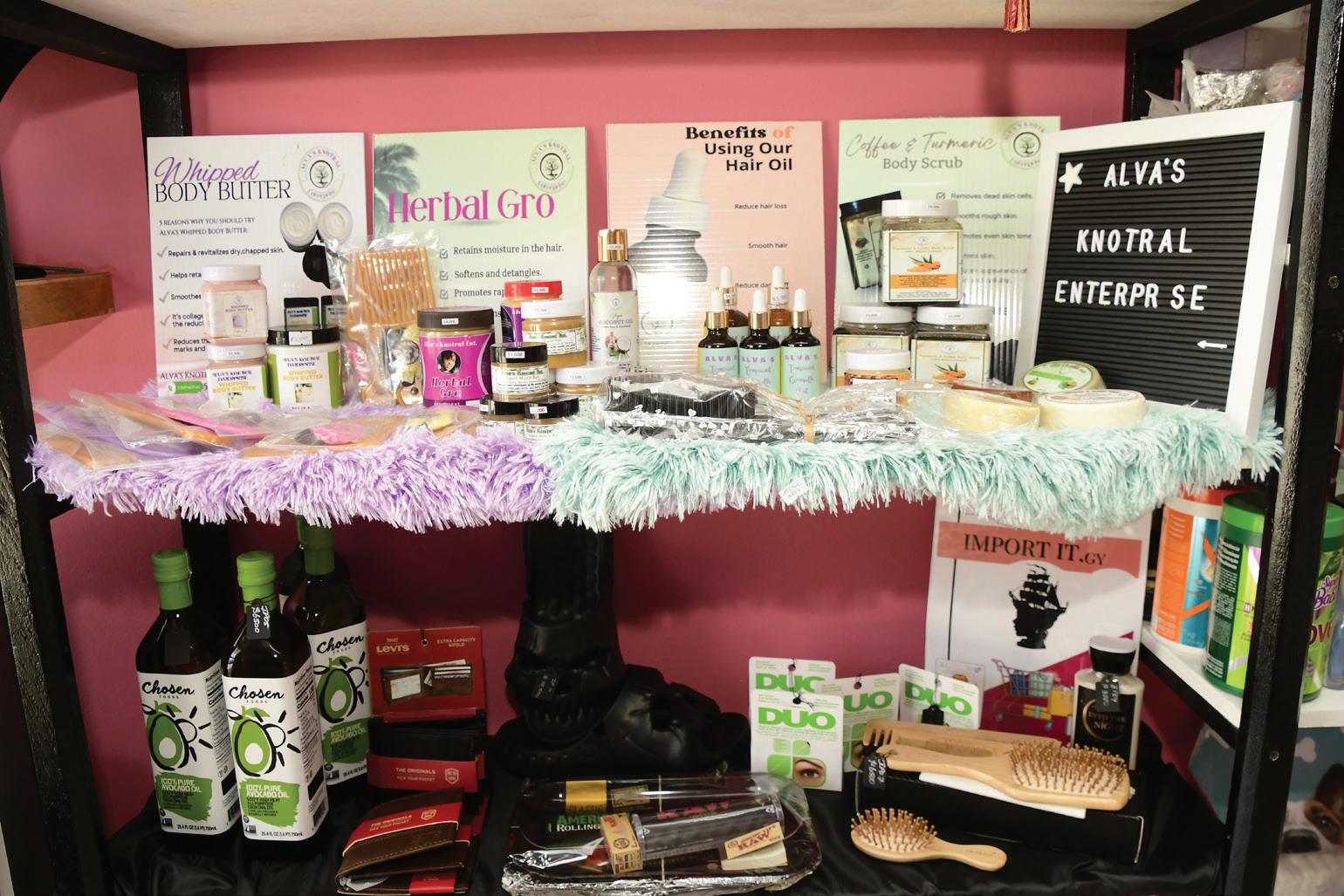
She explained that so far, the demand has been good and she has a few persons on the waiting list and with that in mind, she is looking to expand Feme to accommodate more businesses and customers.
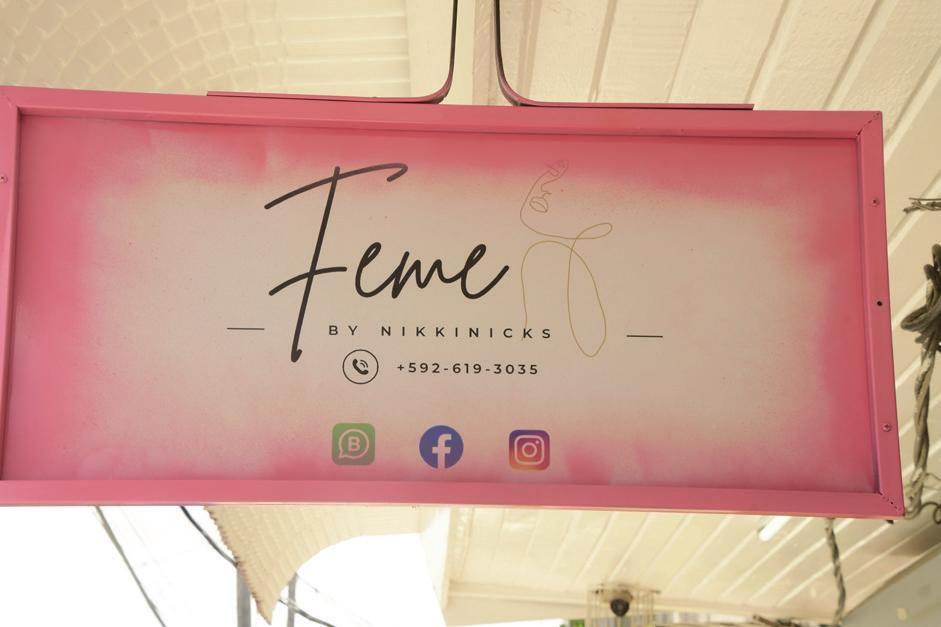
Fung added that because of her drive for business, she maintains an active presence
customer base.
“With small business, the hardest part is to start and once that is achieved, it can be lucrative if you have a plan and choose to do something you love. It will survive with profits,” she reasoned.
The business owner reported that she is far from perfect and from her mistakes in business, she learned a few things to maintain her stance as being multi-talented, a versed marketing personnel, a photographer and an entrepreneur.
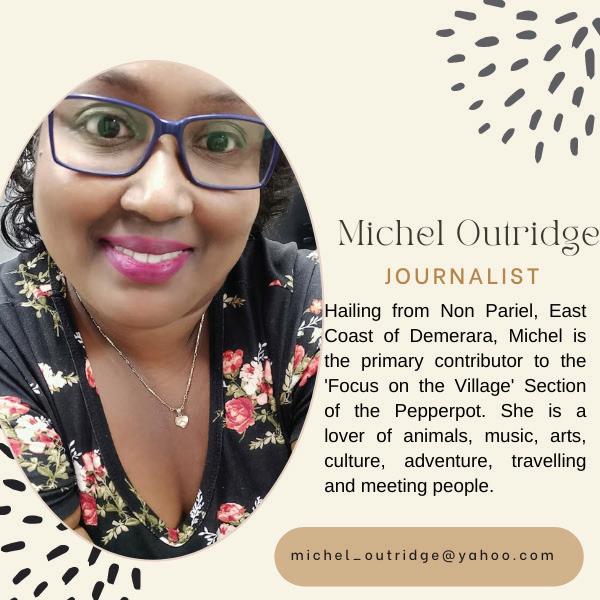
Following the opening of Feme, the response to that kind of business has been
SEE PAGE XXIV
GUYANESE Letesha Welch, better known as Mattick Queen, has been singing from a very early age, among her family members.
The Pepperpot Magazine sat down with the singer who hails from the ancient county of Berbice, to talk about her life and music career. Welch explained that her career got a boost following her participation in the Berbice Got Talent competition. “I won that competition and that inspired me to pack up and leave Berbice and come to Georgetown and go deeper into music,” Welch told Pepperpot Magazine.
She noted that when she came to the capital city, she got in touch with IQ Studios and started recording dancehall music.
Most singers sing from the perspective of the type of environment they grow up, the family culture, and practices, and the people who shaped the way they see life.
This was the case with Welch, who told us that Dancehall music speaks to her emotions and she feels the music at her core.
“What we would normally do as a family on a weekend, my aunts, cousins, and uncles would come over, and we would normally have a dance-off, sing-off. We would normally battle off, and whoever won would receive a prize, so I have been doing dancehall since then, so that is why I am drawn to this type of music,” Welch shared.
She expressed that she can express herself more in that type of music because she loves to sing about her life.
Beyond singing, Welch has big plans to expand her talents. “I want to have my own clothing line and become an actor. I want to follow the likes of Rihanna, I want to go out there and represent my country fully and show youths in the country that we can make it through music, so I am not going to limit myself to one thing,” Welch disclosed during an interview.
Welch shared that if she aims to excel in the arena and reach her goal, she might have to enter more genres of music; this includes reggae, soul, rhythm, and blues and the like. According to her, the sky is the limit.

ing at an event called “Guyana Day”, an event which is held

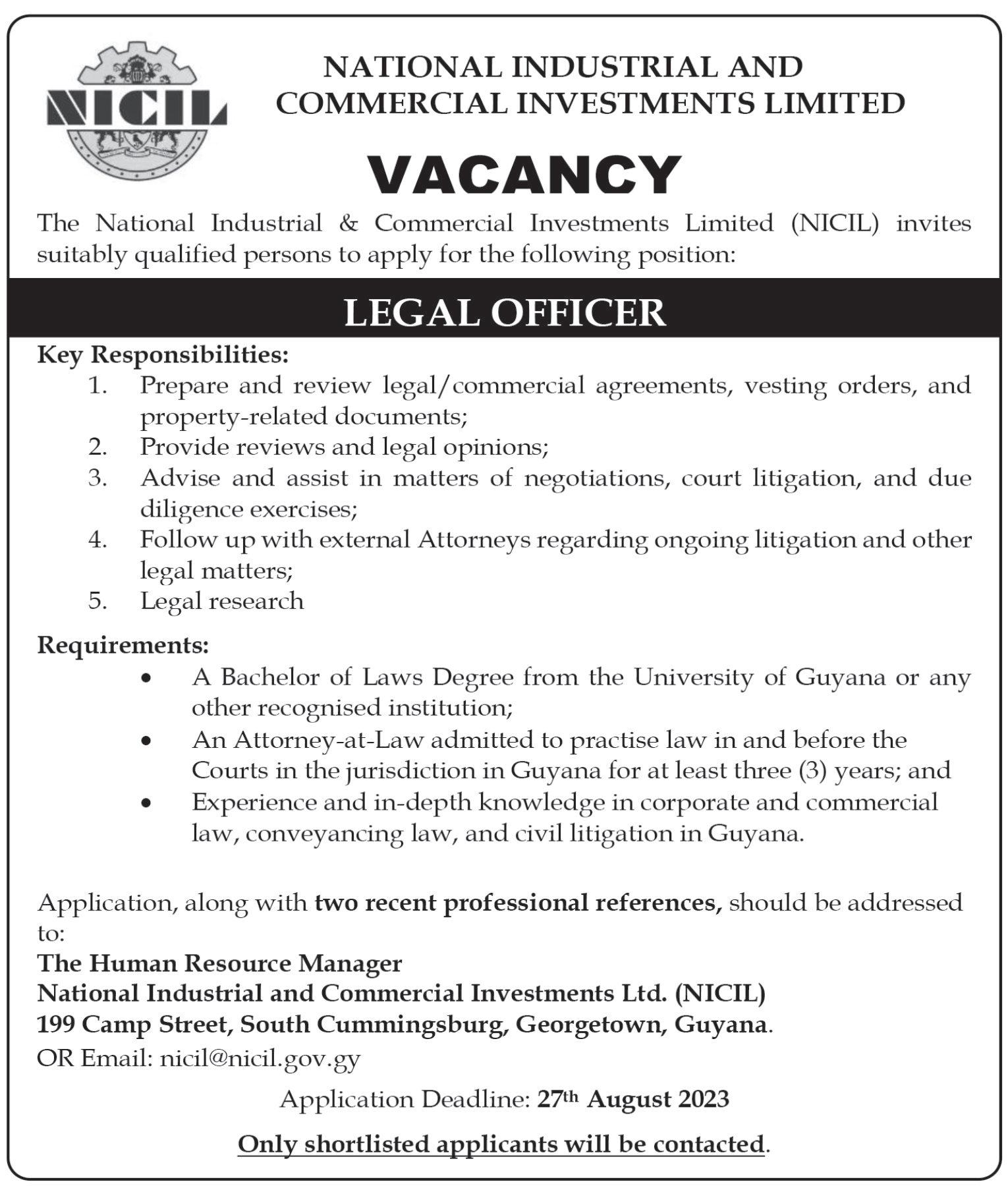
annually in New York, United States of America. She also plans to represent this country on a boat cruise which will be held in New York City come next month.
“Yeah, we will be out there, performing and stuff, having fun with my fellow Guyanese. I am on my promotional tour right now. I am out here promoting myself with people who don’t know me,” she told Pepperpot Magazine.

Welch said that she is a single mother and her daughter lives with her mother all the way in Berbice, along with the other members of her family.
According to her, she is well aware of what is called country life.
She related that she has had a dream ever since she was a child to be an artiste, and that has propelled her to continue singing and doing what she loves and always wanted to do.
“I go to bed and I see myself performing on a big stage with large crowds and lights, screaming for me, and then I have been writing as well, despite the fact that I wasn’t the best writer at the time, but, for my age, I wrote some great music, but I never recorded it or anything, I just wrote it. I must also say that my family is responsible for it. They pushed me a lot. My family plays a big role in my life right and is responsible for where I am today.”
THERE are people who are very passionate when it comes to their careers and what they do for a living. Dr. John Anderson, who developed a passion for caring for people ever since he was a child, can be considered one of those passionate people.
This brilliant young man, who is a medical doctor at the Georgetown Public Hospital Corporation (GPHC), also began his career at the said institution.
During an interview with the Pepperpot Magazine, Dr. Anderson revealed that the journey to becoming a doctor began
as young as 10 years old when he would dress the wounds of neighbours and relatives who had sustained injuries and render aid to those who were ill.
After completing his secondary school education at St. Joseph High School and President’s College, John wanted to become a doctor but specialised in a field that did not have many people - pathology to be specific.

“Upon entering the University at age 17, I wanted to become a pathologist; however, my father wisely advised me to pursue an Associate of Science Degree in Pharmacy. I was successful and completed my Associate Degree by the age of 20 in 2000. I practised as a pharmacist for the next nine years, including at the GPHC Pharmacy,” Dr. Anderson told the Pepperpot Magazine.
During that time, Dr. Anderson recalled that he began lecturing Pharmacy at the Georgetown School of Nursing.
Additionally, Dr. Anderson held the position of Associate Professor in the Doctor of Medicine Programme at the Georgetown American University and was the Chairman of the admissions committee at the same institution.
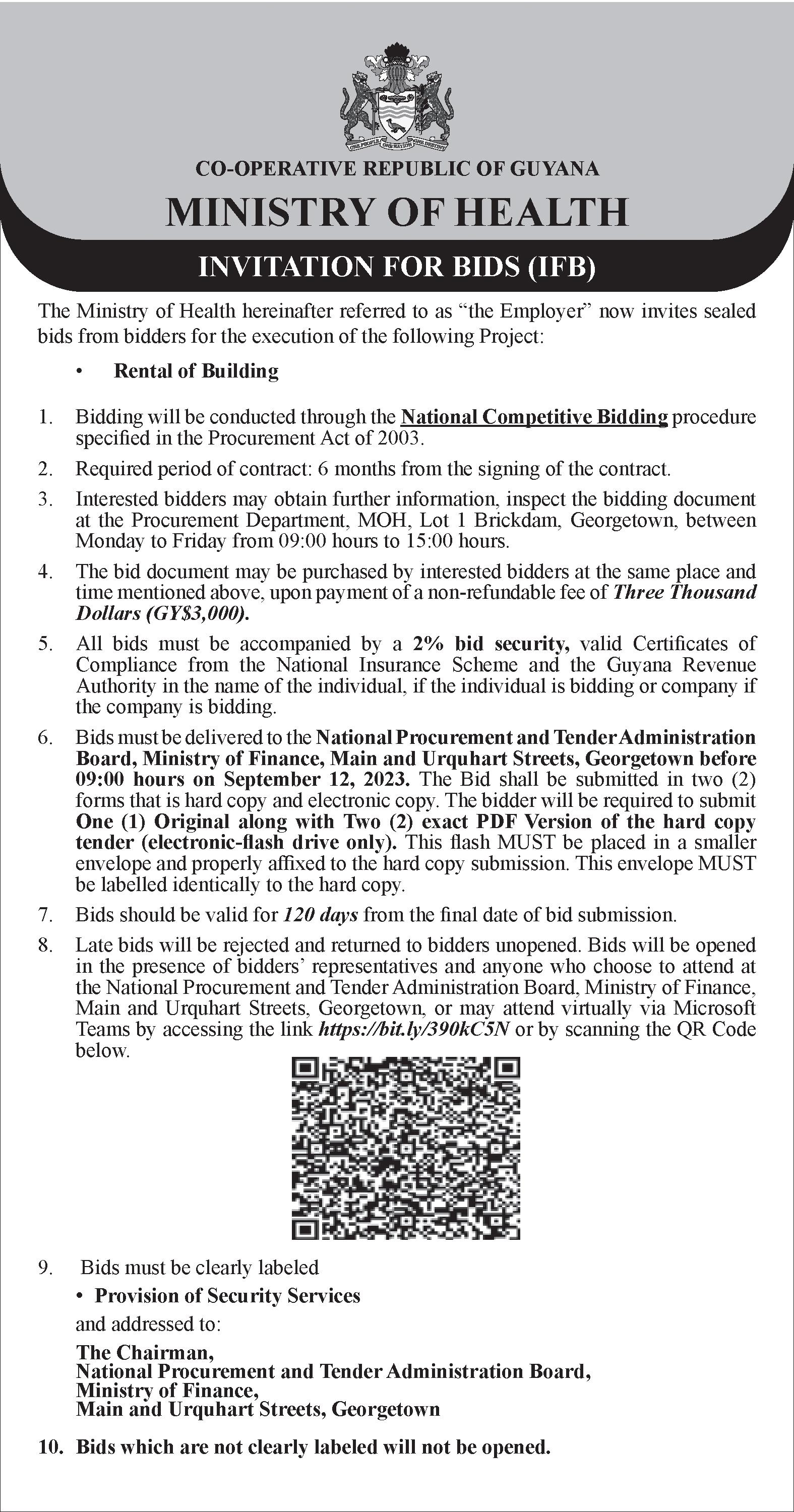
Dr. Anderson shared that in 2009, he began reading for his Bachelor of Medicine and Bachelor of Surgery (MBBS), which he successfully completed in 2014. He then began an internship at GPHC and has been working in the Department of Internal Medicine since.
He noted that during his stint in the Department of Internal Medicine, he was privileged to work with some of the greats in Internal Medicine Consultancy. Those included Dr. Ramsundar Doobay, Dr. Myra Izquierdo Duenas, and Dr. Joanna Cole.
“[This opportunity] cemented my love for the discipline. I worked in the medical wards at GPHC until 2020, when, in an attempt to refine my practice, I shifted my focus to outpatient Internal Medicine at the GPHC Medical Clinic, where I currently work,” Dr. Anderson told the Pepperpot Magazine.

At the medical clinic, Dr. Anderson manages patients with chronic diseases such as hypertension, diabetes, rheu -
matological diseases, autoimmune diseases, etc. He noted that GPHC is the national referral hospital, which, according to him, exposes him to a wide variety of patient categories, and is important for making a well-rounded Specialist Doctor. Dr. Anderson’s main motivation for coming to work daily is his patients; he is cognisant that he is making a difference in their lives.
According to Dr. Anderson, the medical clinic setting allows him to reach the patient one-on-one, thus facilitating a human exchange between doctor and patient. He noted that this fits well into his personality, where those virtues he holds sacred could be demonstrated to his patients. In his experience, he has found that talking with and listening to the patient as a human being encourages an improved patient approach to medical guidance.
According to Anderson, in 2020, the responsibilities above were relinquished to focus fully on pursuing the Specialist path with a Master’s Degree in Internal Medicine, which he successfully completed at the University of Edinburgh, Scotland.
“One of my most cherished experiences is that of a young patient, 15 years old at the time, who was seen by me as a first-time patient at the Medical Clinic. Her mother explained that the patient had been seeking private medical attention over the preceding two years and had been diagnosed with many diseases without resolution of her symptoms. However, after evaluation, I diagnosed her with Systemic Lupus Erythematosus and began treatment. She is still a member of the Medical Clinic and is fondly referred to by the nurses as my ‘daughter’,” Anderson told Pepperpot.
Though his interest will always be General Internal Medicine, Dr Anderson explained that he has a passion for hypertension and stroke. “Hypertension and its complications are a major problem both globally and locally, placing a significant burden on all health systems. Consequently, I intend on pursuing postgraduate training in this area of Internal Medicine so that I can be of even greater benefit to Guyanese,” he said. “Through my healthcare company, The Centre For Healthcare Excellence Inc. I plan to have dedicated clinics dealing with hypertension and stroke patients since I have had tremendous success managing them over my years of medical practice.”
THE beaches, trees, the red loam road and the smiling people all make a trip to the village of Coomacka an unforgettable experience.
Coomacka is a small village located in Region 10, where the people still plant their own food and use water from the river.
With its 800 or so residents, the village is strongly community-oriented. Even with its various beaches, lakes and hills, getting around the village of Coomacka is
community gatherings and as a landmark for those travelling through Coomacka and beyond.
One Big Family
Ron Thompson is a young man living in Coomacka and has done so for all of his life.
The 28-year-old works at the village’s health centre. In a place like Coomacka, strangers are easily noticed by the locals. As Ron states, “Growing up here, I know almost everybody and ev -

life is observed. Even among the beautiful homes, there are still hints everywhere of a simpler way of life among the residents. When it comes to how the residents of Coomacka survive, Ron explained that many of them work in different areas, including in the village’s school and centres. However, a few of them go bound their village and work elsewhere.
The interesting quality about Coomacka’s residents is that they are, without a doubt, peaceful, regardless of their challenges. Many people living outside of the area of Guyana cannot fathom the thought of living without
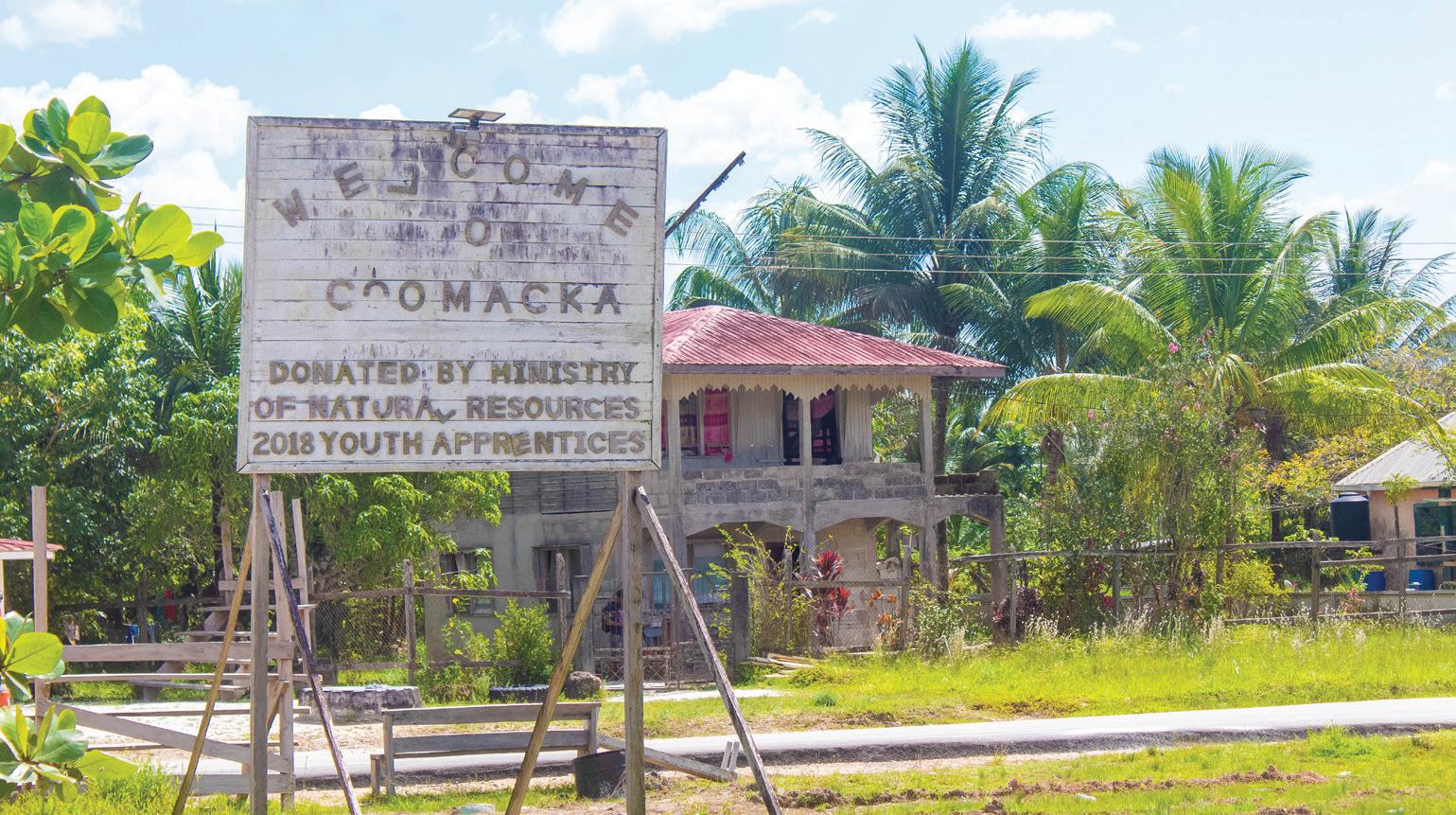
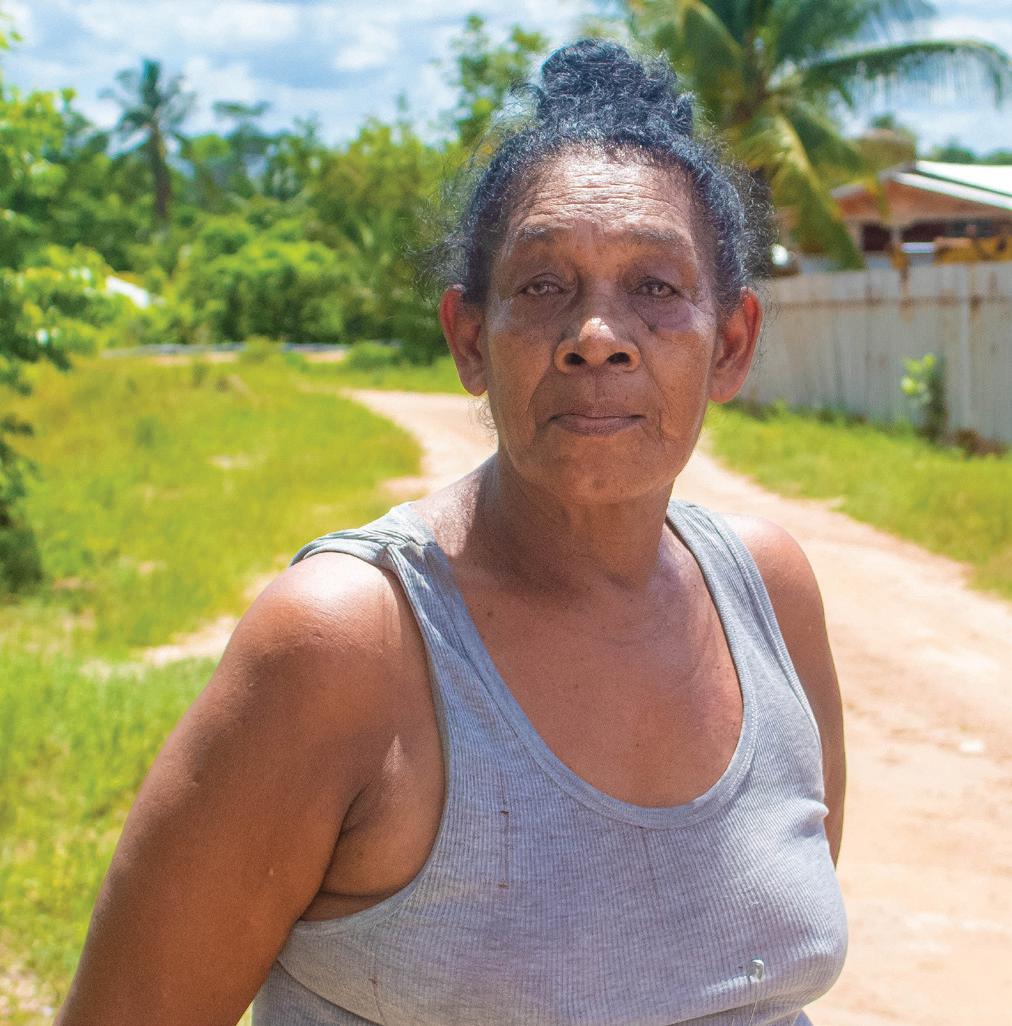
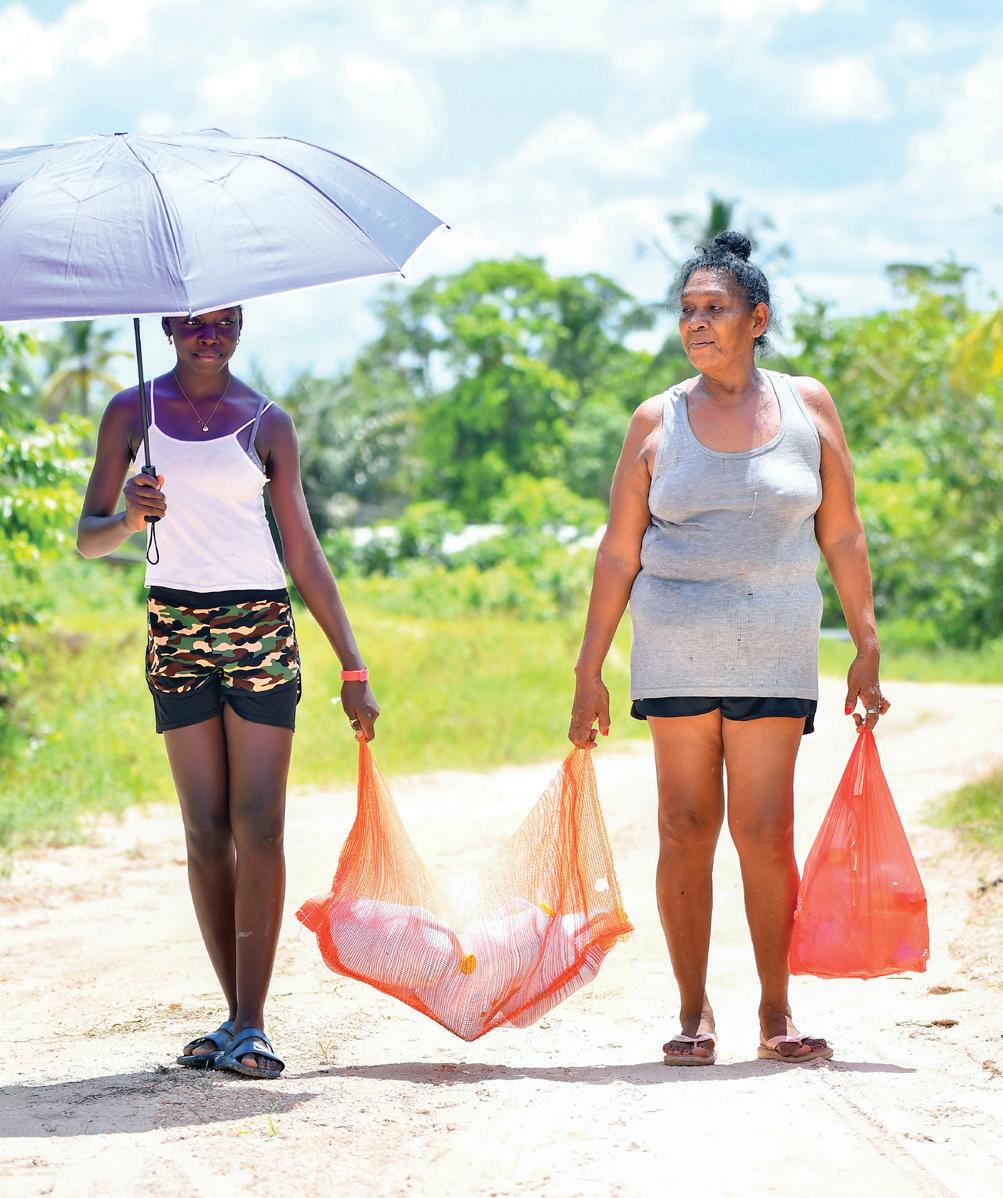
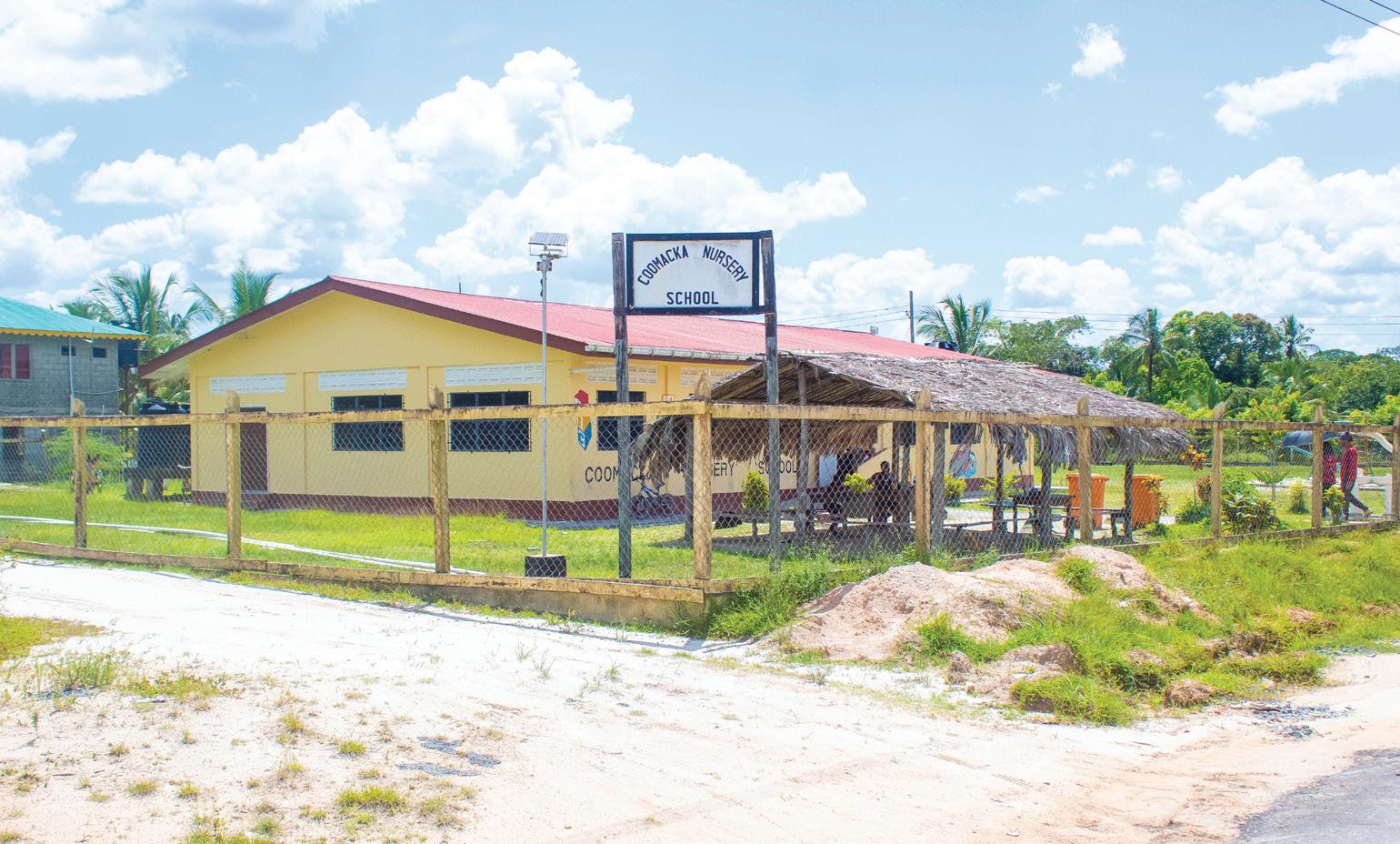
perhaps why the river is so important to the people of Coomacka. Many people use the river as a means of water to bathe and wash with.
The people Gwendolyn says are one of the things she likes about Coomacka, as she stated, “The people here are very friendly and hardworking.”
a nurse. And I always wanted to be a teacher, and I love children.”
As a part of the younger generation in Coomacka, she sees gaps in employment for the youth. But the people of Coomacka, true to their nature, found a healthy way to bring their youth together: sports.
pared to its location and considering the female involvement, sports development in Coomacka makes it more impressive.
simple.
The village has one main road that runs throughout its entirety. And the village’s focal point is its ball field. It can be seen as one enters and is used as a place for

erybody knows me.” To describe Coomacka as closeknit would not be doing it justice. Coomacka is one large family.
Venturing further into Coomacka, a simpler way of
pipe water. But the people of Coomacka use pumps to get their water where they need it. Even though the community has electricity, allowing for the use of pumps, many still face the issue of drinking water.
Gwendolyn Fredericks has lived in Coomacka for just a few months. The team caught up to her and her daughter doing something that isn’t seen everyday. They were carrying water. Gwendolin is a live-in guard and has a home outside of Coomacka in Wismar. Gwendolyn and her daughter and granddaughter live in Coomacka due to her job, and she says it hasn’t been easy.
“We have to go every day as long as we don’t have any water.” Gwendolyn shared when asked how often they need to make the trip to get drinkable water. This is
Ronique Duggun is a young woman who, like most of Coomacka’s villagers, was born and raised in the village. Ronique is a teacher in training and mother of three. She became a teacher because it was just something within her, as she stated, “I went to Coomacka nursery school. And growing up, there were some people that wanted to be a teacher or wanted to be
Before she began her journey to becoming a teacher, Ronique played a big role in the community’s cricket team. She was in fact captain of the team. “I was the captain of Coomacka’s Young Warriors cricket team. Not everyone in our team is together but we still play. And Coomacka has three female trams at the moment,” Ronique stated.
Sports in any village are noteworthy. But when com-
When asked why she believes sports has bloomed as it has in Coomacka, Ronique shared that, “I think because the majority of our teenagers and adolescents are school drop outs and they are at home. That is something whereby they come together and come out and enjoy.”
The community of Coomacka, like anywhere else, is constantly changing and developing. In speaking to the team, the residents shared a unanimous thought that whatever issues come their way, they will find a way to bounce back as a community and as a people.
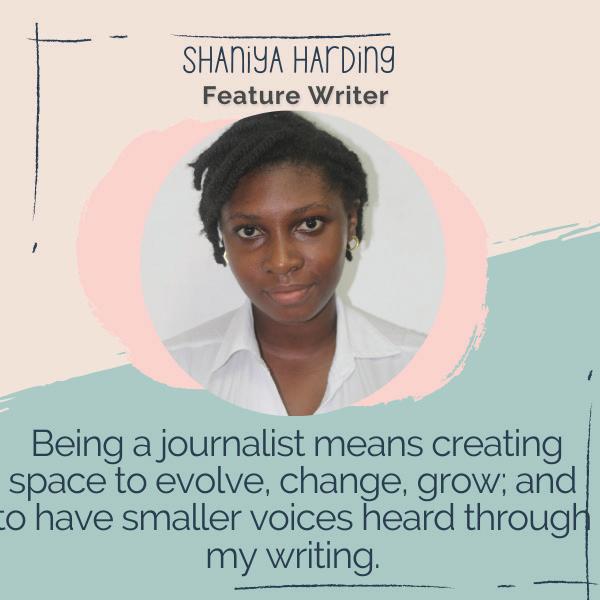
FOR many people, a trip to a beach is a day out with their family. But for Julia Effienna a trip to the beach is a walk in her own backyard. Julia, or Miss Daw, as she is known by most of her neighbours, is a woman with an extraordinary story of strength, courage and, above all else, faith.
The bright and active 79-year-old woman has lived in the village of Coomacka all her life. She was born in the village and after leaving for a while due to her father’s work, she returned as a child and has yet to leave the village she calls home.
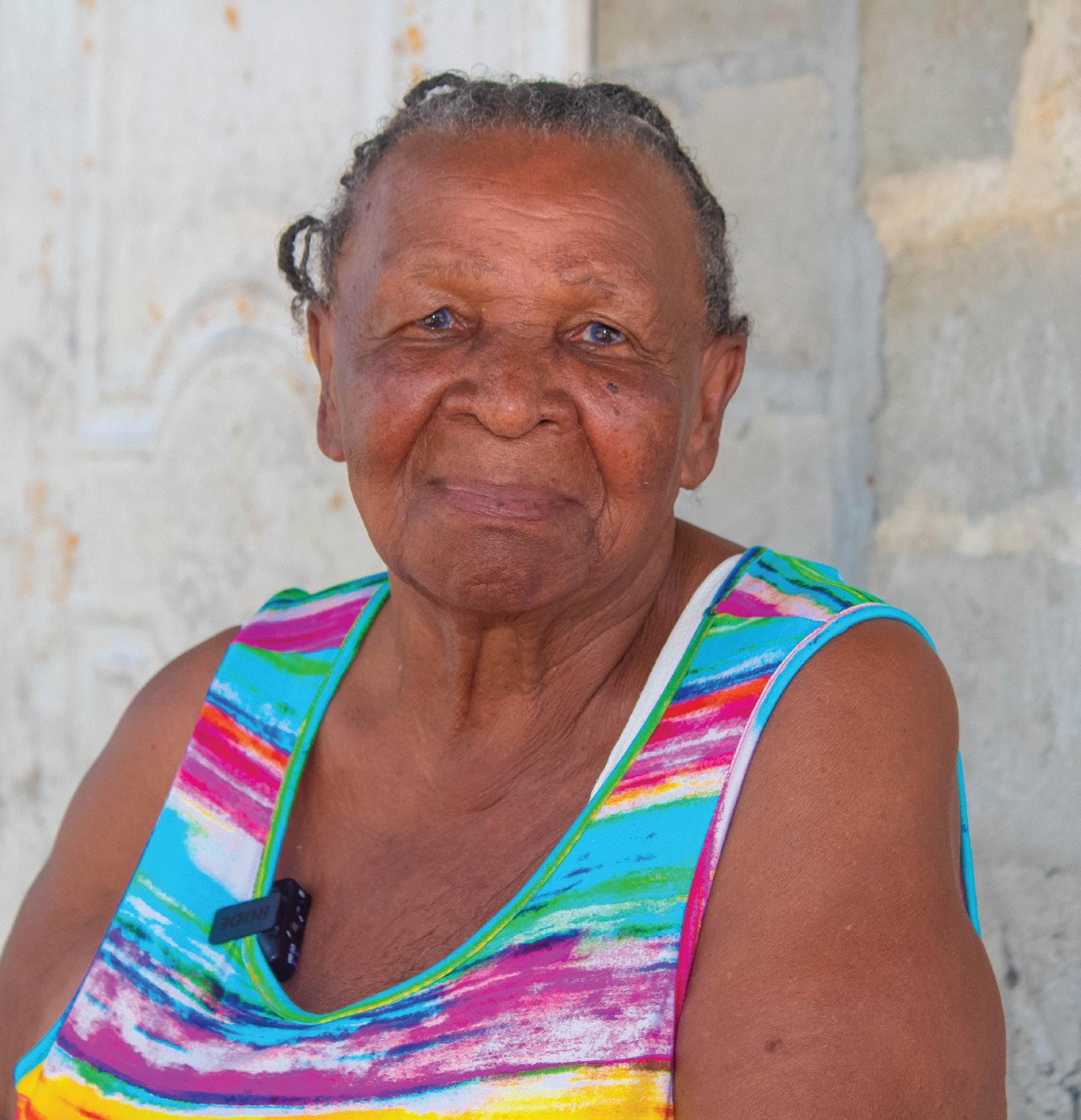
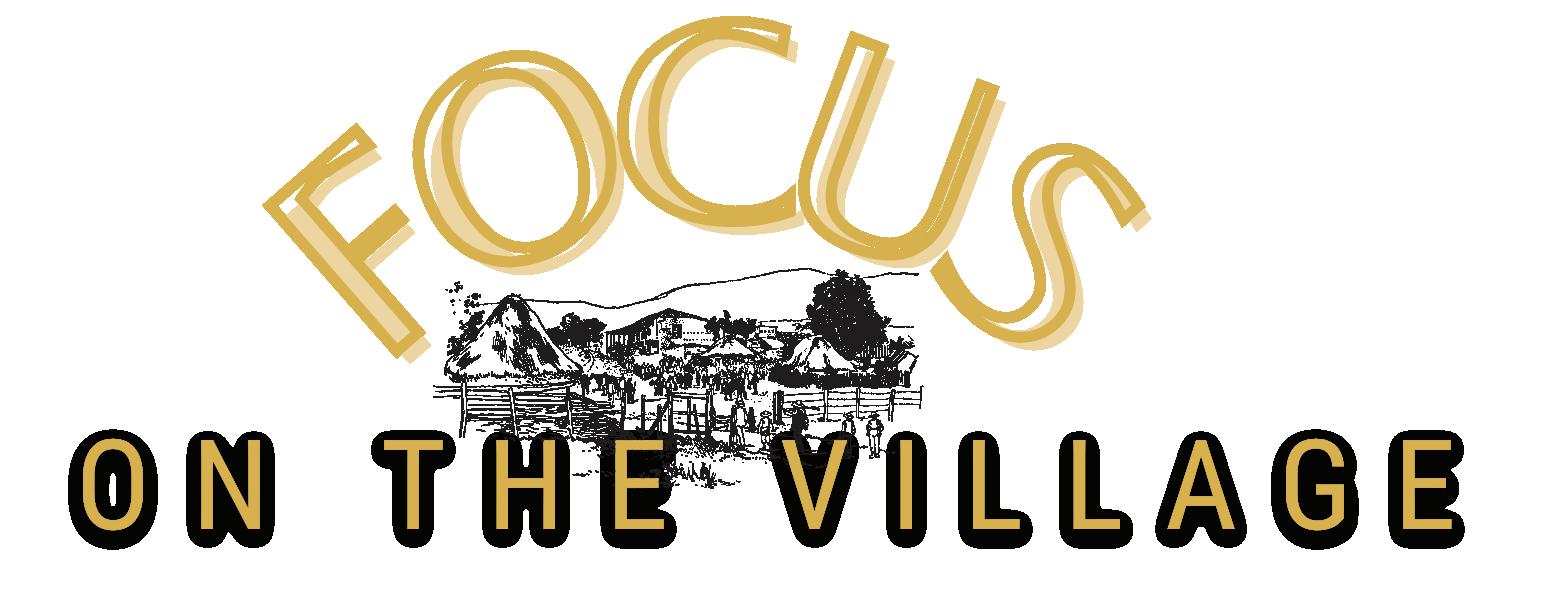
Julia is today a prominent pillar in her community. But she has become so well
remember everything about her youth, she does recall that it was a happy time. As she stated, “It was a cool and quiet community and still is up to now.” She went on to describe how neighbours would care and look out for each other—blurring the lines between friends and families.
Providing for a family of 19 was at no point in time an easy task, but Julia coped with it the best way she knew how as she described an almost unbelievably serene existence. One in which she and her husband worked but also farmed and fished for their survival.

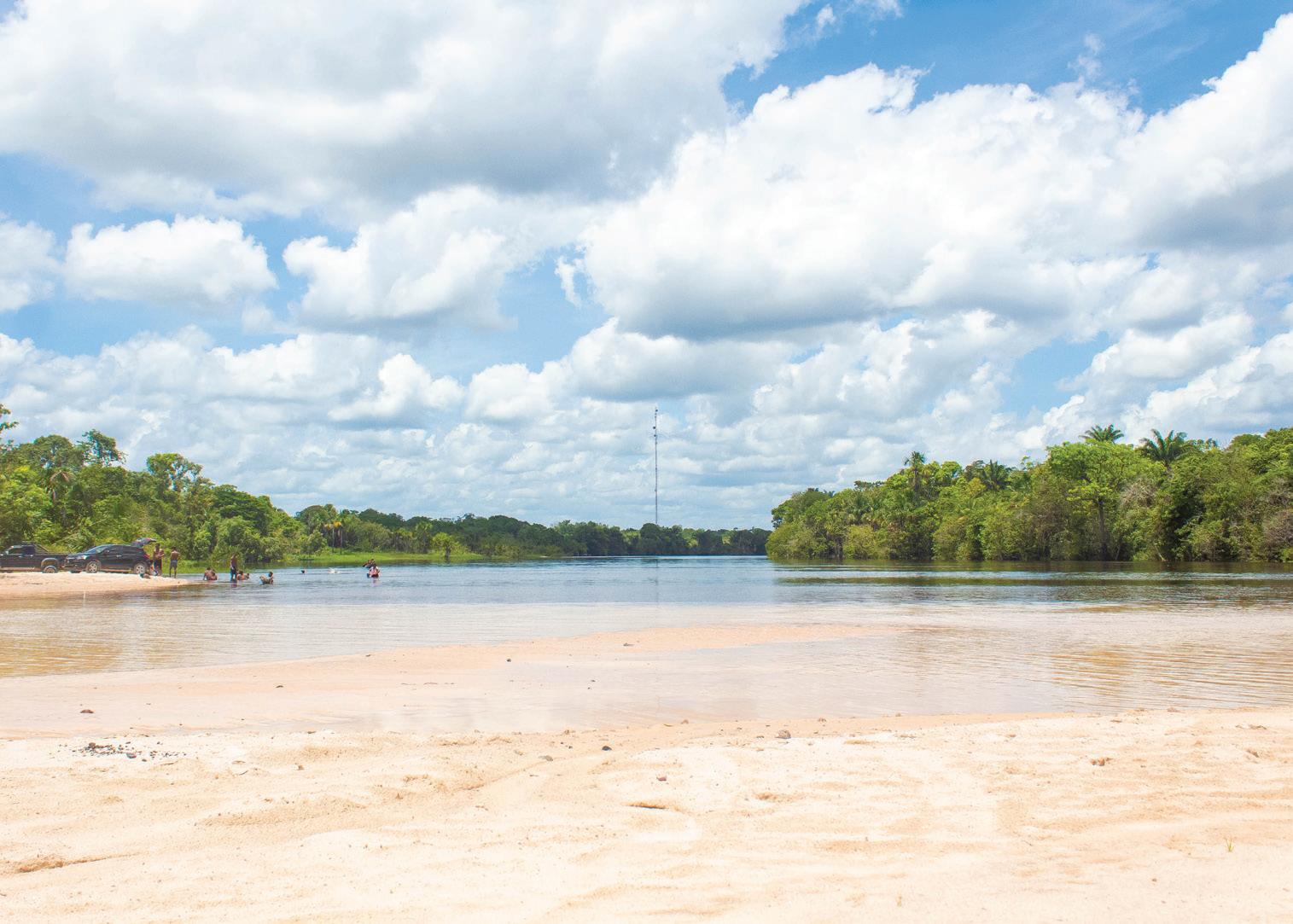
Bauxite mining played a big role in Julia’s life as well. Her husband worked in the Coomacka mines. Julia rem-
your garden for some eddo or something.”
Today, Julia’s hard work has not gone in vain. She no longer works but is well taken care of by her children. Julia often times visits Georgetown when she feels the need to. And still at her age, she is adamant about her independence, as she stated, “I went to Georgetown about four months ago. And when I want a vacation, nobody could stop me.”
Julia still exercises every day by a little stroll through her village. She placed great emphasis on her health, as she would like to live to a hundred years old. Julia says she doesn’t know why she would live to a hundred years old but just wants to. But for a woman who
known due to one simple fact about her and the children she’s had. Julia gave birth to a whopping 24 children throughout her life, 19 of whom are still alive today.
In November of this year, Julia will be 80 years old. Today, as a mother of so many, she has lost count of her grandchildren but knows she has a few great-grandchildren and even a few great-great-grandchildren. She has seen a lot in all her years and has been the first to do many things in her community.
Julia was among the first batch of students at Coomacka’s school and the first to get married at just sixteen. It was such a big occasion that she was given the school to have her wedding, “I got married at the Coomacka school. My wedding was kept as the school as the first student to get married from the school,” Julia stated.
Although she does not
inisced on what Coomacka once looked like with trains running through the village loaded with bauxite. “There was a cart that used to carry up my husband’s lunch in the midday hours. People would come and get them and take it into the mines for them,” she said.
For many years, Julia and her husband lived a happy life until he left the family when her youngest was still in school. During that time, Julia was living in a whirlwind where she still doesn’t know how she made it out.
The people’s self-sustainability cannot be overstated. How Julia, her family and others of her time were able to survive is truly remarkable. As Julia stated, one of the reasons she made it was due to her ability to farm, as she said, “If we were hungry, you would go and throw a line. You must get a fish or go feel around in
has achieved so many other milestones, what’s a hundred years old?
When asked about what her secret was to get strength, resilience and long life, Julia stated that perhaps it was just the fact that she did well and just kept going. To lead a life like Julia has requires a strong human spirit.
Today, Julia’s life is a quiet and happy one. Having lived a life and having children to be proud of, she does very little daily. But her family is what makes every day worthwhile as Julia stated, “My family makes me feel good. Even if I have sorrows, l look at them and I feel happy.”
When asked if she believes life was simpler, harder or just the same as it once was, she said it wasn’t any, as she stated, “Life was according to how you make it, just like now.”
THE village of Coomacka is captivating with its simplistic beauty. The community is located in Region 10, up alongside the Demerara River. The small community has an estimated 800 residents, their own nursery and primary school, health centre and churches.
The village is picturesque with its various beaches, lakes and creeks. Coomacka’s beach has led many outof-towners to venture into the village in hopes of finding adventure. And sometimes people find so much that they never leave the enchanting little village of Coomacka.
One such man is Robert Jones, who has lived in the
impact is still felt by villagers today, even on the ground they walk on.

Bauxite mining was happening in Coomacka before it was happening in many other places in Guyana. The digging and exploration of the rich soil have gifted the community with beaches and lakes and left them with broken roads and promises from companies that have worked in the community. Villagers’ opinion of what mining has done for Coomacka varies greatly from villager to villager. But they all share a similar sentiment that mining has done much to make Coomacka what it is today.

As Robert explains, when he first came to live in Coomacka, the train that
tically out of scratch “As a young man, I came up here, I met a lady and I married her and I decided to stay down here. I started building life here.” Robert then went on to say, “When I first came here, we didn’t see it has a house lot. We just had wheelbarrows, spades and shovels.”
When Robert first came to Coomacka, everyone had a simpler way of life. Robert reminisced on how the people of that time lived largely off the land. The older generation living in places like Coomacka still hunted, farmed and fished for a living. And because he came from Yaribo, a place where the people depend largely on the river, finding new ground in a new place was difficult. But
on my shoulder and went as an operator and I got a job.”
“I used to work with the bauxite company and I gave them 17 years before coming off,” Robert says. But in those 17 years, he saw multiple companies come into Coomacka and leave one after the other, most of them coming from places far beyond Guyana’s borders. Robert says in the early years, he remembers ‘highlanders’ who came into Guyana and Coomacka searching for bauxite. As they transported bauxite out of the village for several years, these companies damaged the roads. The various companies, in turn, promised to fix the community’s roads but never honoured
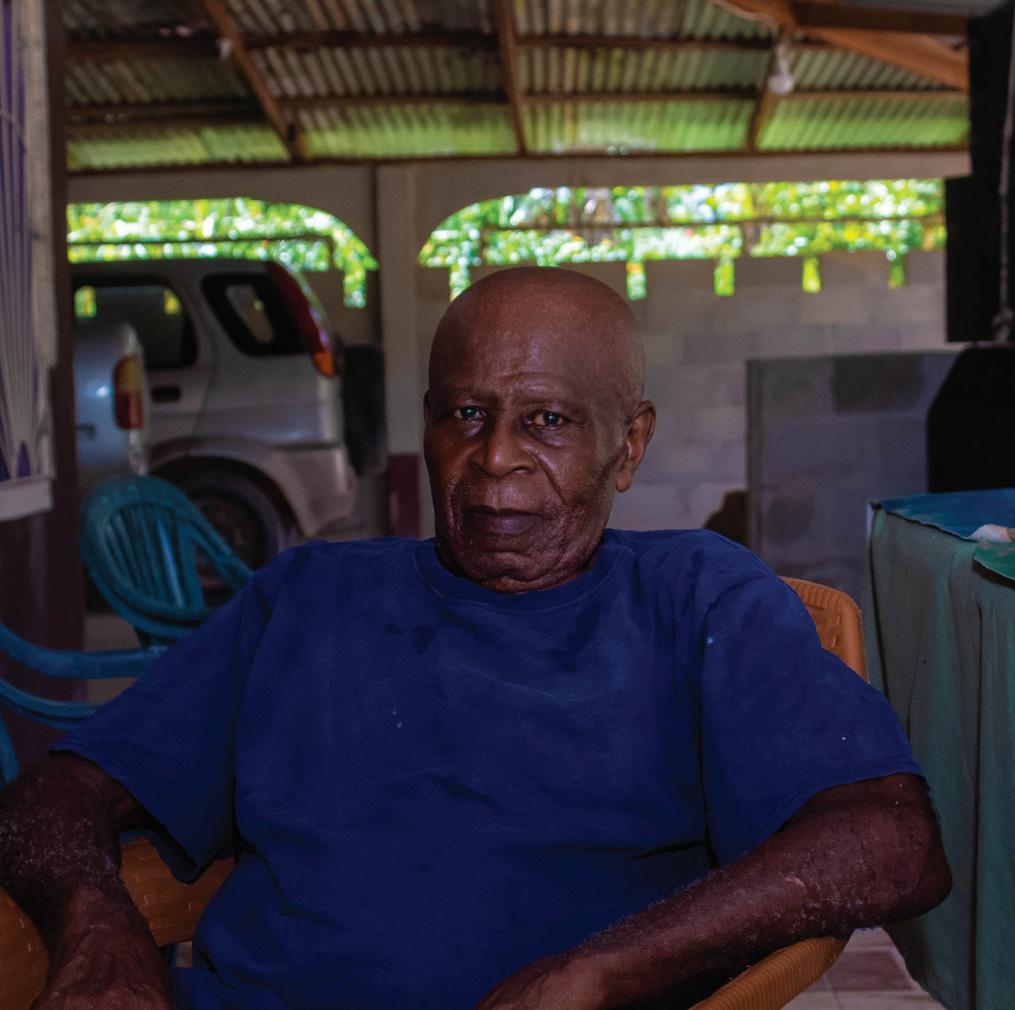
that promise.
“They promised to us years and years ago that whenever the train stopped running the very foundation will be a road,” says Robert. This promise was never made although it was made by company after company. Robert went on to explain why the mining companies fell short of caring for Coomacka. One reason he says, is due to fact that they wanted to save money. As Robert explained, different firms used different equipment as they came and went. And for a long time, the bauxite carriers remained like old memories in various corners of the community.
As challenging as those times were, Robert says that there is no place he’d rather live. Many of the residents presently have small businesses, just like Robert. And he believes that with a few infrastructural developments, the village of Coomacka will see more economic development. Nonetheless, Coomacka is a beautiful place with beautiful people.
In recent times, the village of Coomacka is known for many things other than its past in bauxite mining. The community’s tourism spots and scenery are slowly replacing the village’s mining image. The roads that take you into the village of Coomacka are still damaged and make for an incredibly rough ride. However, in a country like Guyana, new things are always being done and new improvements are being implemented. Coomacka doesn’t have many roads; they actually only have one main road, and today, works on the road is being done.
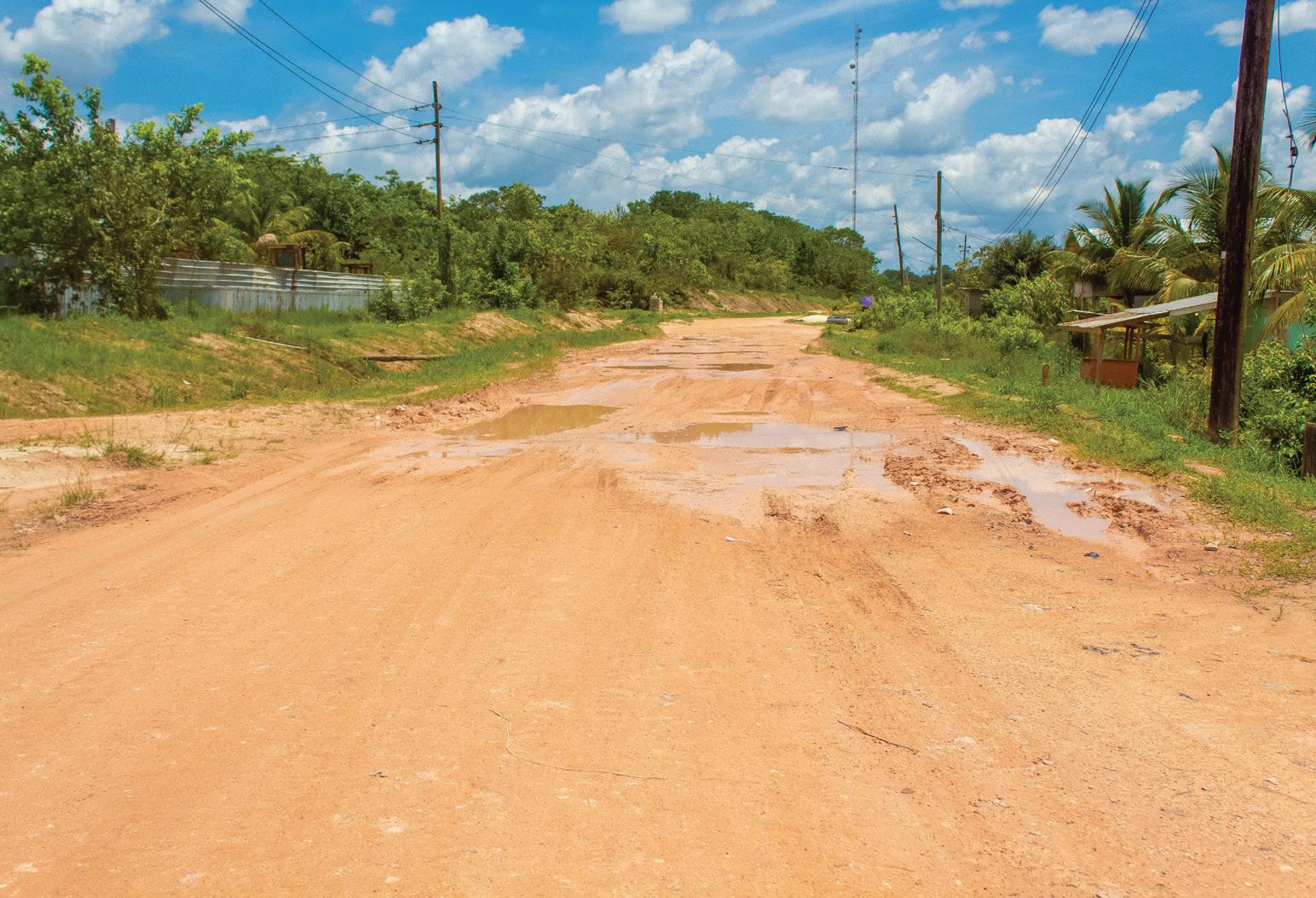
Looking into the future rather than the past and hearing from the younger generation, many are optimistic about where Coomacka is going. Most of Coomacka’s youth work in the community’s schools, health centre or in construction. Coomacka has gone through the age of bauxite and is now known for what makes it different: its rare and special beauty
village of Coomacka since 1959. In those days, he says Coomacka was drastically different. Coomacka’s mining past has left a prominent mark on the village. The village was built on bauxite mining, and although it is still called “The Mines” by most today, very few know just how that period shaped the community and how its
brought the bauxite out of the mines, ran right past his home. Robert himself worked with the various bauxite companies for over 17 years.
Originally coming from a small village further up in the Demerara River, called Yaribo, he learned a new way of life very different from what he grew up knowing. And he built a home and a life prac-
Robert made certain to keep going for both himself and his family and began working as an operator for bauxite companies. And as uncertain as those times were, Robert exhibited an almost unfounded faith in himself and the future, as he stated, “There were many times I left and I wasn’t conscious where I was going. But I put my bag
THE village of Coomacka may be lesser known than its more popularised counterparts, such as Linden, Three Friends, Old England and Wismar. But the people of this small village have a profound love and passion for their community.
Many villagers may argue that their little village is missing from the map of Guyana. This, however, keeps the pure beauty of the community. And it certainly doesn’t take away from the togetherness its people have managed to forge among themselves.
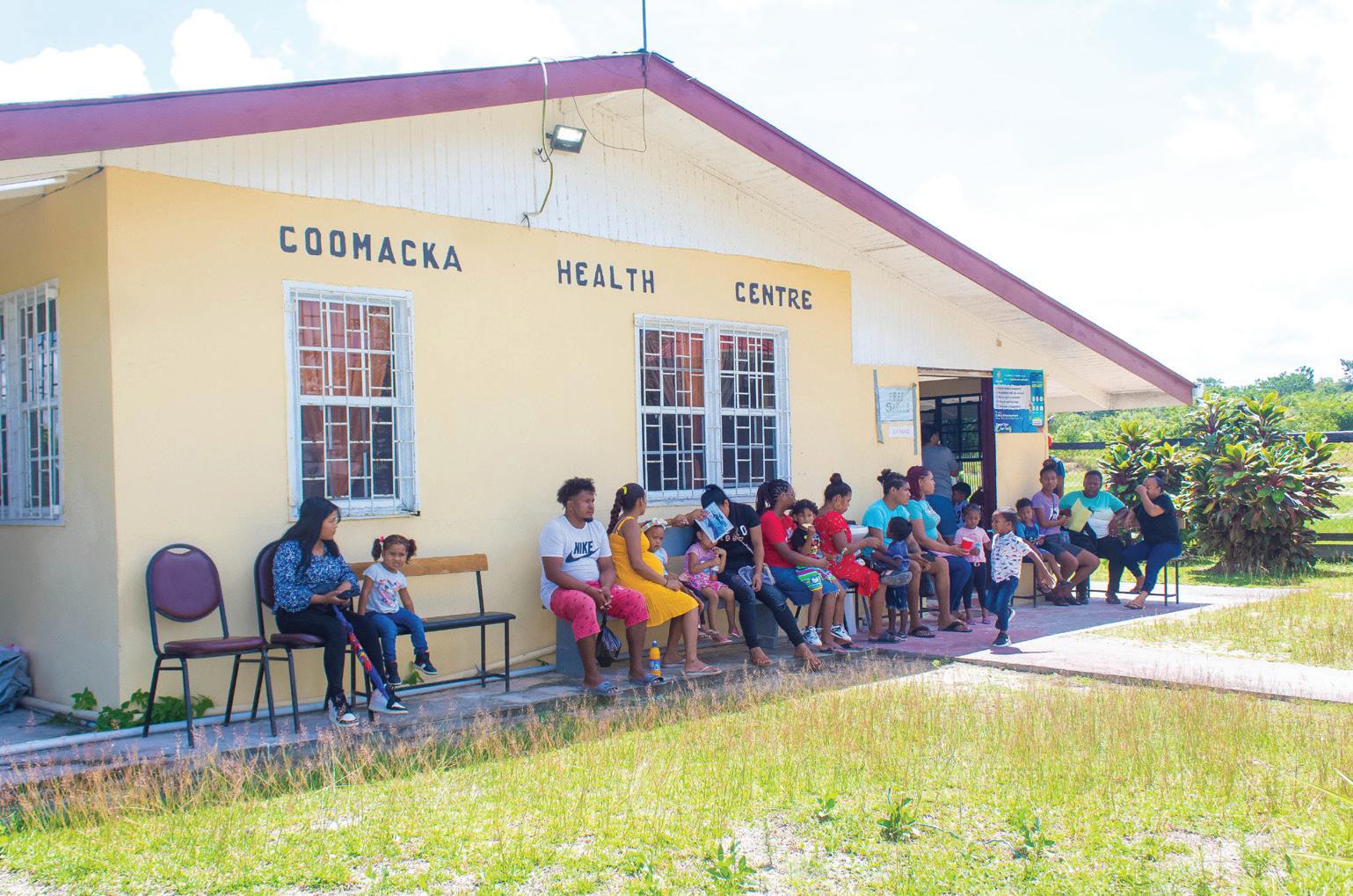
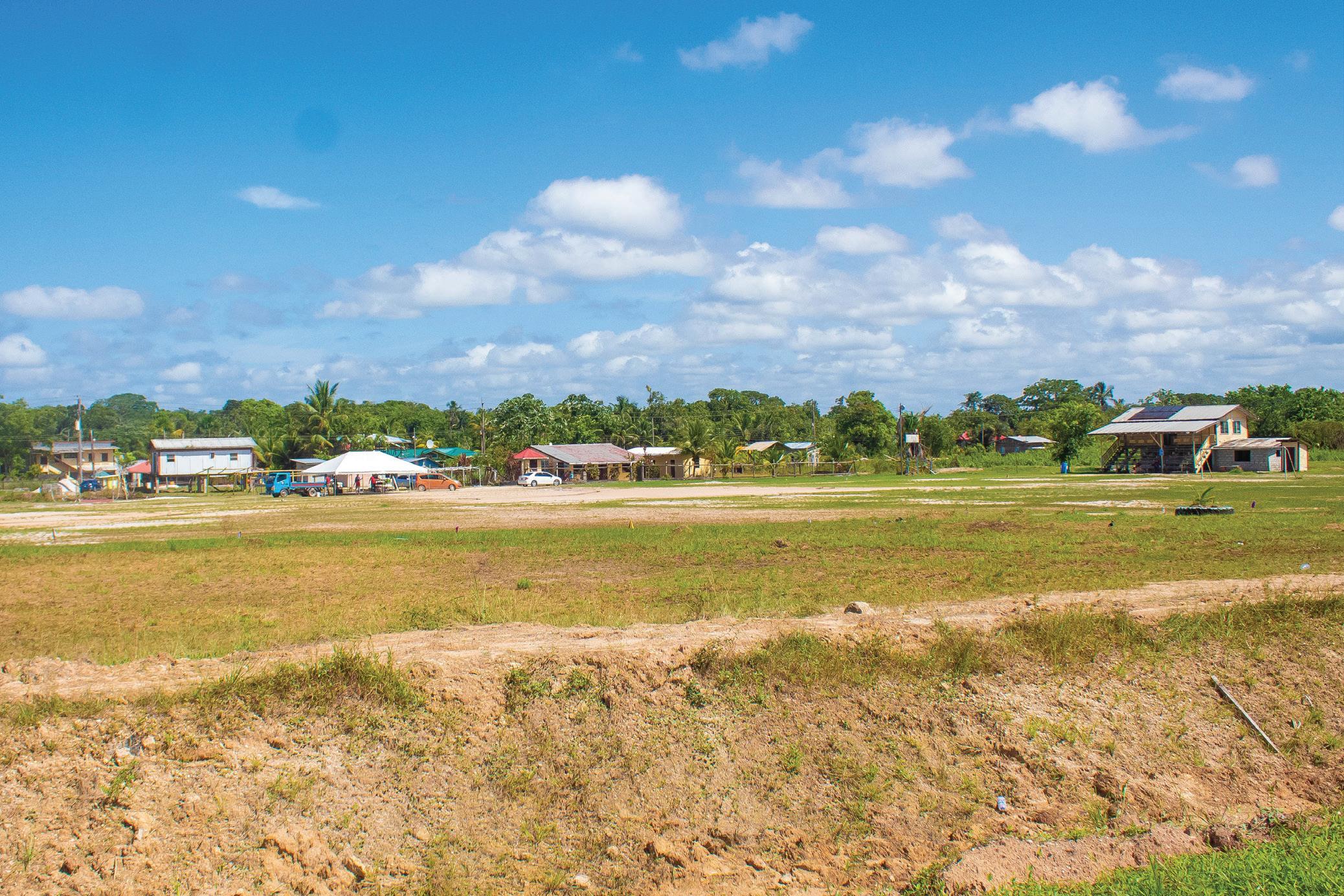
Health care is oftentimes a matter that is brought up, speaking about the location of villages like Coomacka. But Coomacka was among the first villages to have developed a health centre. Established more than 20 years ago, the little centre has grown to become an important part of the community and its residents. Healthcare workers like Bernadette Torres and Yumona Fraser go above and beyond to care for the people of their community.
Bernadette Torres has lived in the village of Coomacka for 24 years. She

originally came to Coomacka on a vacation with her husband in 2000. But just like its people, the village of Coomacka captivated her and made her stay. “I came here after my husband brought me to spend a few weeks there, and I like it. I decided to get a piece of land and start a new life here.”
Bernadette joined the health care field almost 10 years after coming to Coomacka. Today, she is a health healthcare worker and the community’s CDC secretary.” The Coomacka health centre was established in 1997. This was the only health centre in the area at that time. We didn’t have a centre at Three Friends or in Old England, so it served a population of about a thousand and more people.”
One of the most important aspects of the work of a healthcare worker is their relationship with the people they care for. Bernadette expressed that she and her fellow nurses try their best to maintain a strong and healthy relationship with the villagers of Coomacka.
Nurse Yumona Fraser is Coomacka-born and raised. Today, she has a family, with three children, the eldest of
whom is also a nurse. Yumona was attached to the Linden Hospital complex before her request to be moved to Coomacka’s health centre was granted four years ago.
Yumona’s decision to make the move was because
of her family. During her time at the Linden Hospital, her eldest daughter took on the responsibility of caring for her younger siblings. The other reason she came to work in Coomacka was simply because she wanted to help her community. As she stated, “For me, working here is a joy. Looking out for the residents of Coomacka and their health.”
Coomacka health care staff is unlike any other as they go out of their way to ensure the health of other people. Even going as far as offering home visits for the community, such as the elders. But like most cooperative efforts, the residents do a whole lot to work with the nurses. And for Yumona, she said they helped build her confidence in herself
and her abilities. As she stated, “Working here at the Coomacka Health Centre has really helped me find my confidence in working in the health sector and dealing with different individuals.”
Moving from a little girl for Coomacka to playing a role in the community’s well-being; Yumona has seen Coomacka bloom and believes it will continue to do so. “It changed a great lot over the years. We have seen Coomacka develop from just an ordinary village, where we had just a red road and small houses. Now we have big fancy houses, and we now have tar roads. And this is just the first phase.”
The villagers of Coomacka have an instinctive, caring nature. Which leads the residents to look out for the
nurses just as much the nurses look out for residents. Zilicka Allicock was born in Coomacka. And from her, there isn’t much bad to say about the place she calls home or the people she calls neighbours. As she stated,” They are very friendly, helpful and caring. The village is nice with nice people. They always look out for one another, always there for one another.”
Coming from a village built on bauxite mining, Coomacka has become a home created by people of all walks of life. The village of Coomacka today has a wide selection of village days and sports events all in an effort to bring a close community closer and make a great village even greater.


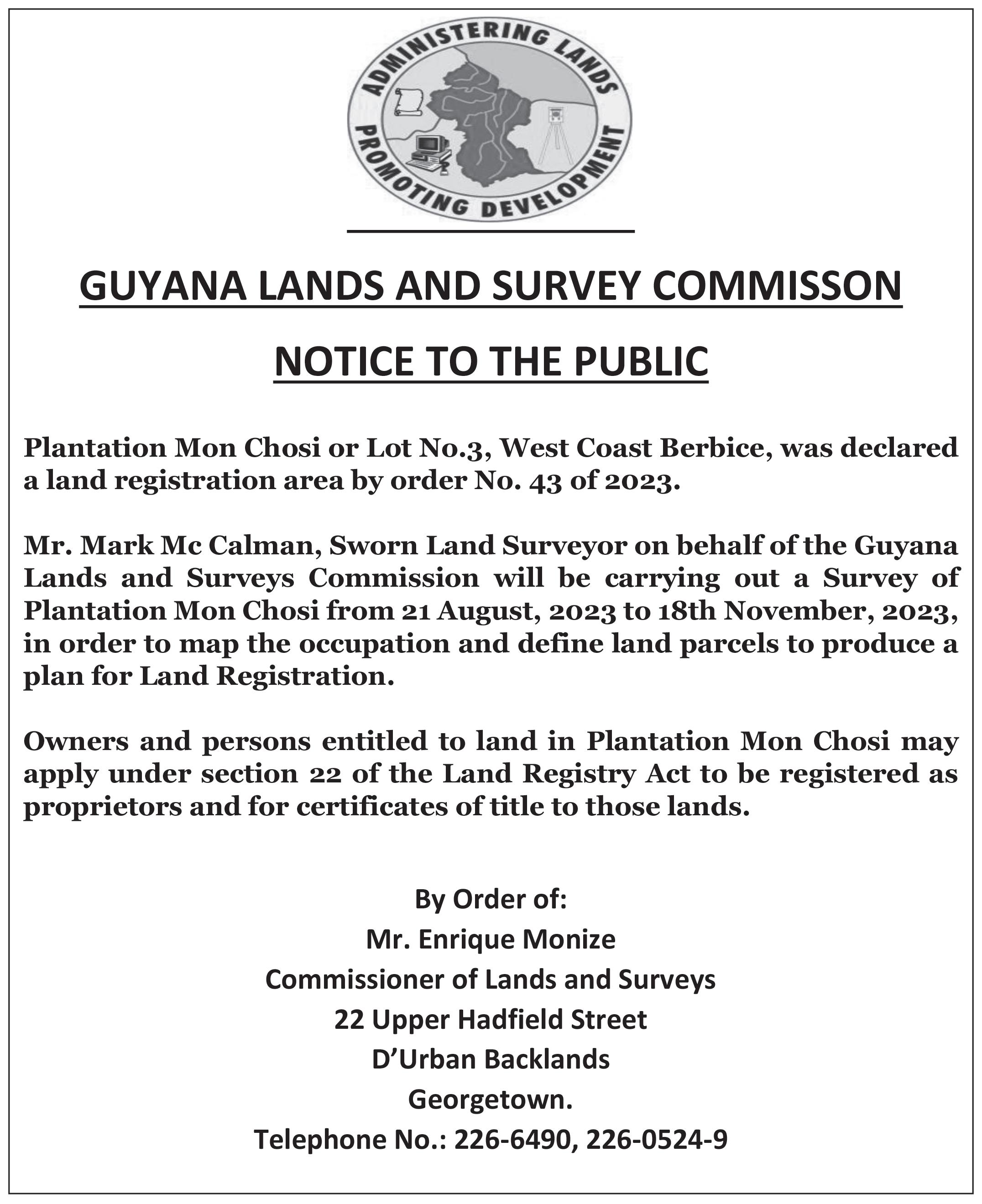
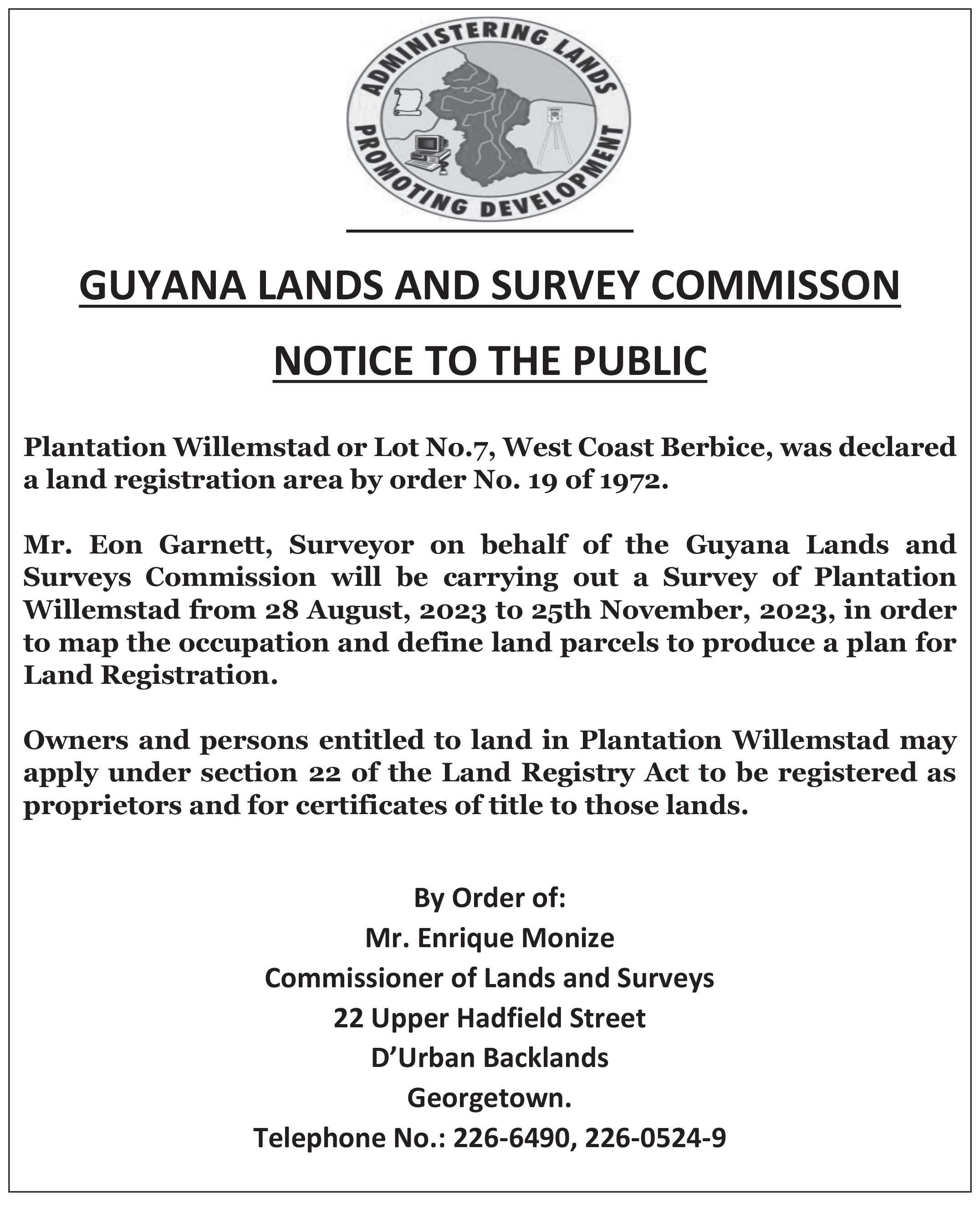

AS we commemorate the 1823 non-violent slave insurrection, possibly the only non-violent mass slave protest known so far in New World history, we must explore what we have learnt from an anthropological position. Our only guide is investigating what we understand from history made known to us through historians, local and overseas. But we must further explore the footsteps of its main characters.
First, we must take the beginning of the misinformation and understand the legitimate anger against enslavement. And it must begin with Jack Gladstone and the woman he had once lived with, or was married to, Susanna, who was thrown out of Bethel Chapel after she became the companion of John Hamilton, manager of Le Ressouvenir Plantation. A conversation between Susanna and John Hamilton sowed the seeds of anxiety and freedom among men gifted enough to envision themselves beyond a continued existence of bondage.
It was possible that John Hamilton did not inform Susanna that he was fired from his post as manager of the plantation when they had the crucial exchange; he most likely told her that he was leaving, and had not been fired by the plantation’s attorney. But we do not know the details of the conversation, except for Susanna’s objective of the relationship with Hamilton that he made available. Susanna had implored Hamilton to buy her freedom and that of her children, to which Hamilton replied, “That would be like throwing money in the trench, since they all would soon be free.” That information was passed to Jack Gladstone a few days later. This was the seed planted towards the non-violent insurrection of 1823. Rumours had begun. Jack did not rely on Susanna’s chat; he made his way to Georgetown to seek out Daniel, who worked for and was close to the Governor as his servant. Daniel warned Jack that he had seen a paper about how a rumour of freedom had started a foolish war in Barbados in 1816, and a great many lives were lost.

Jack’s impulses lay in the fact that he was talented, an artisan, and at times a teacher at Bethel Chapel. The rumour could not be separated from the legitimate passion to be free. The planter populations, except for a rare few, were a contemptible lot, existing on sustaining slavery towards wealth. Thus, it was logical for the planters to despise the Congregationalists, realising that the African enslaved found comparisons with the Biblical enslaved, and could then, even without the priests, analyse that it was possible that the plantocracy was capable of withholding or prolonging the finale of slavery, as was done in 1834, with an additional four years, under the mockery of so-called ‘Apprenticeship’.
All around Jack were in the majority; an immoral planter class. Thus, the enslaved planned their protest, with or without the further urgings of Hamilton, through Susanna, but these were Hamilton’s private schemes. Jack had no way of knowing if Hamilton really said what Susanna was relating. Every time Jack tried to see Hamilton, the manager was busy or out. But it was Susanna’s urgings that related the following method of
not to wage war, but to seize the weapons and drive the Whites to town, and when the Governor came out to see the reason for it all, the slaves would come forward and speak out. If they were not “a parcel of cowards”, they would have had freedom already. Susanna added that Hamilton wished that the slaves would give him some time till the coffee harvest was over, so that he could sell his things. Hamilton most likely envisioned his final gratuity through this enslaved struggle. What part Susanna played, we can only presume. To be called a coward was not forgivable. Though Jack may have had reservations about the nature of the next step, he did hear the word coward again directed at him. This was a charged word among Africans. The matriarchal value in African culture permitted credence for Susanna’s opinion.
Warrior queens and female warriors were common. The error was that the enemy they were engaging shared no common familiarities regarding combat restraint on cultural
principles of compromise engagement. As I mentioned before in an earlier article, the English army was devastated in their campaign to subdue Toussaint, thus, animosity and fear existed, and the protest was in its context, vulnerable. But it did hasten abolition. The savagery aroused condemnations in Britain.
In closing, I had crafted a script for the theatre or a graphic magazine named ‘Children of other Gods’ a few years ago. I could not help but place Susanna as a forefront character. I admired her tenacity on the question of freedom for herself and her children. She remains a symbol of what 1823 revolved around. Africans did not know the slavery they faced in the Americas in Africa. Their memories and stories told were of a different world. Susanna captures the desperation at all costs to shape this new world into a place she could empathise with, beyond its slavery.
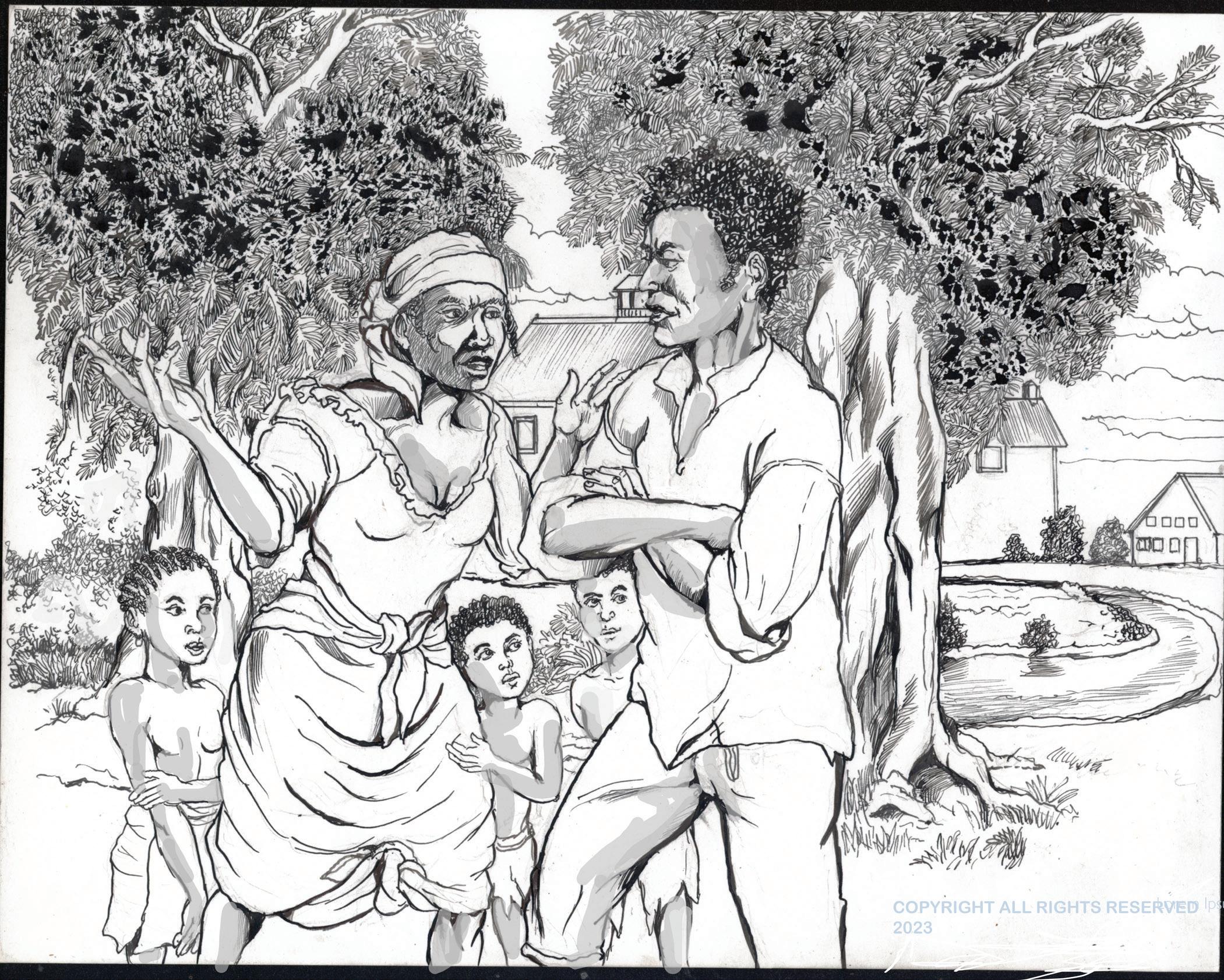

Last weekend will be rated as one of my empowering weekends for this year. Saturday morning was the first session for the Etiquette for Tomorrow’s Leaders”. I decided to sit at the side of the class and do some work on the computer, but the information was so significant that it quickly got my attention. Some of the
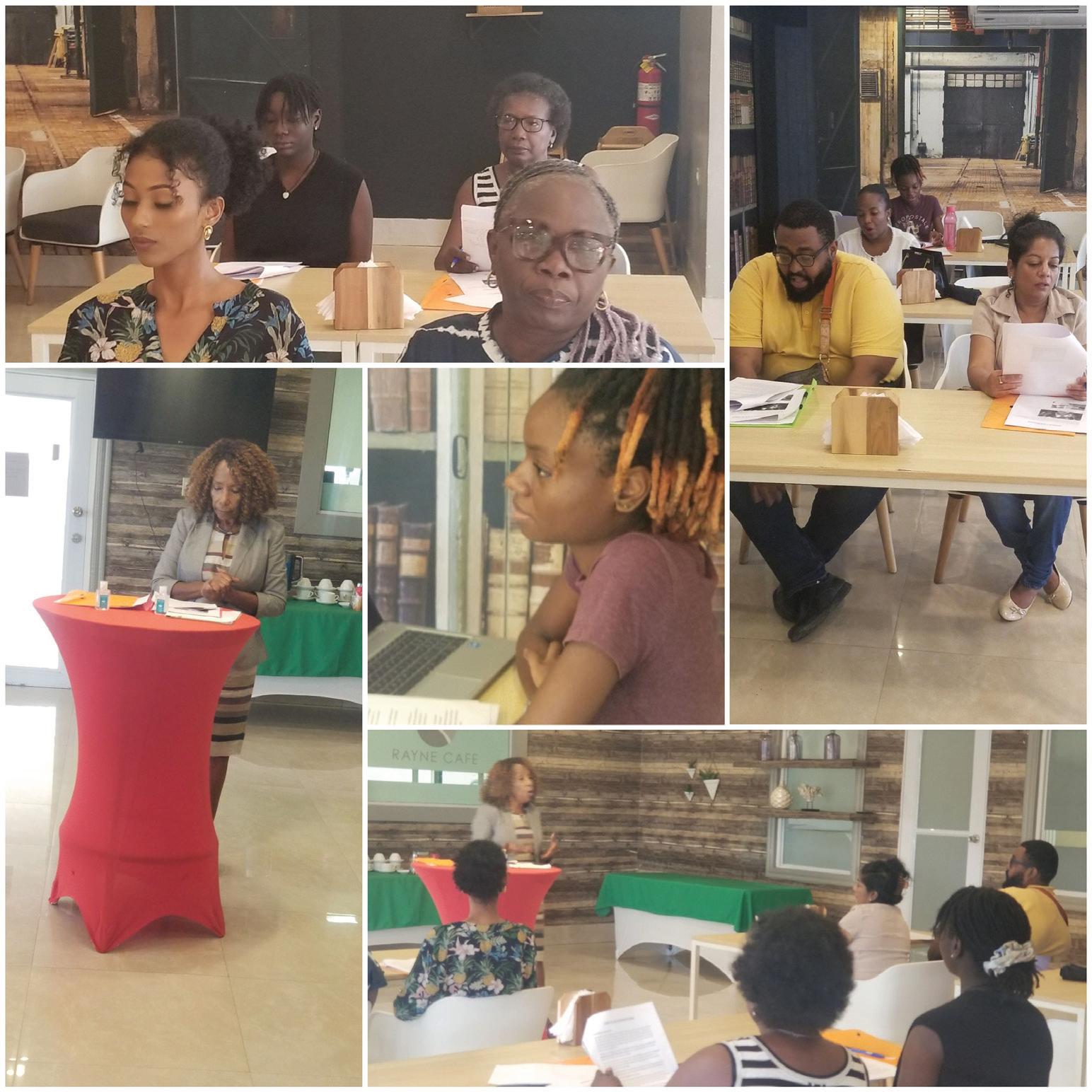
information I knew, and it was a good refresher, but some was new. I admire the techniques Phil used, which connected well with her students. I have seen people teach and just regurgitate information from a book, but this was different. This was not the first experience my friend in action, but I am always in awe.
Her personal stories that were incorporated into the content give it more meaning. Participants sent reviews after the first day and I will share the reviews below from the two youngest in the class.

“The etiquette session was truly remarkable, offering invaluable insights into refined social behaviours. There were engaging dis -
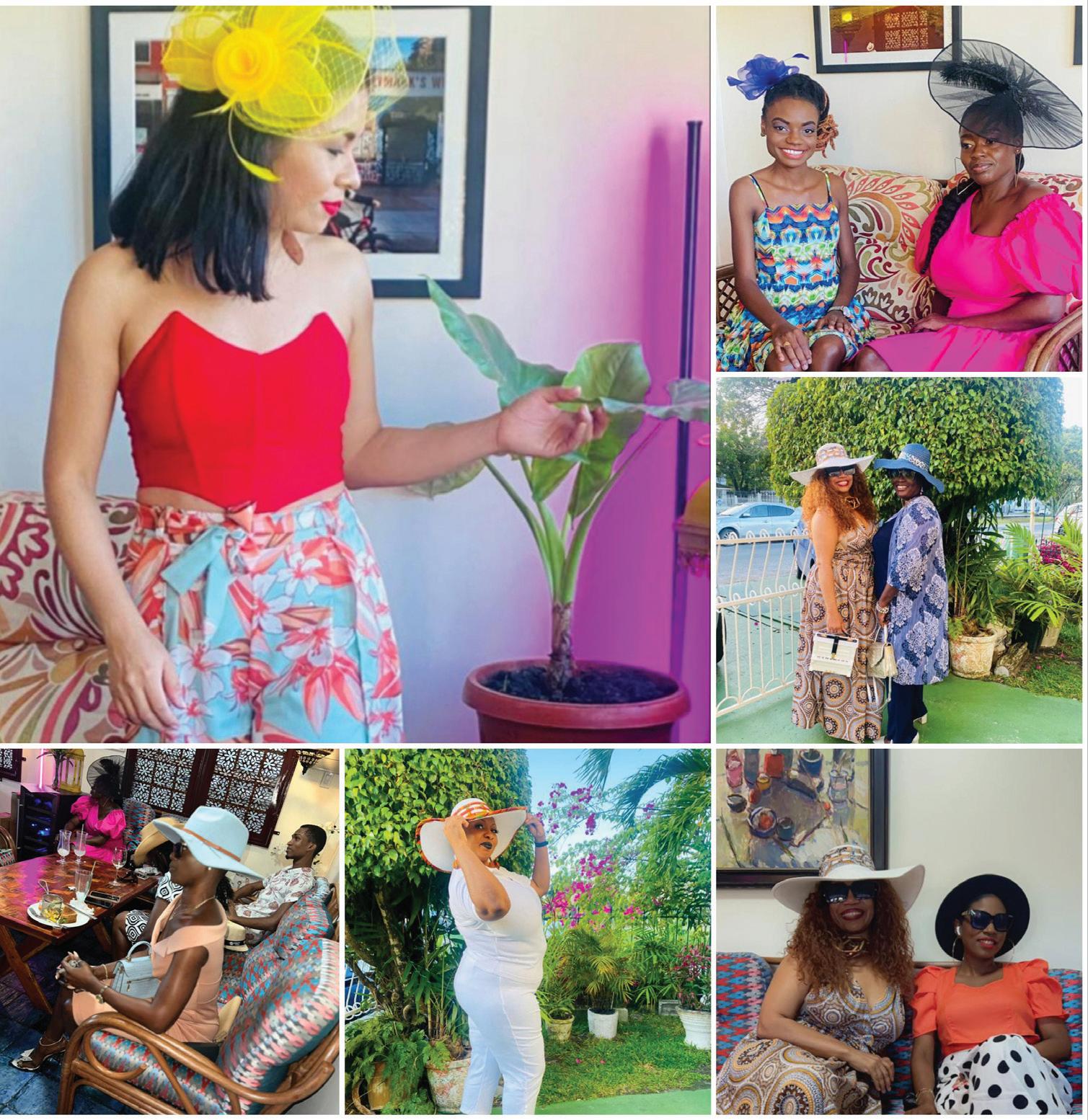
cussions and practical tips that left me feeling confident and empowered to navigate various social situations with grace and poise. It was a genuinely enriching experience that will undoubtedly enhance my interactions.”
These were the words of Leteefah Forde, who was crowned Miss Global In -
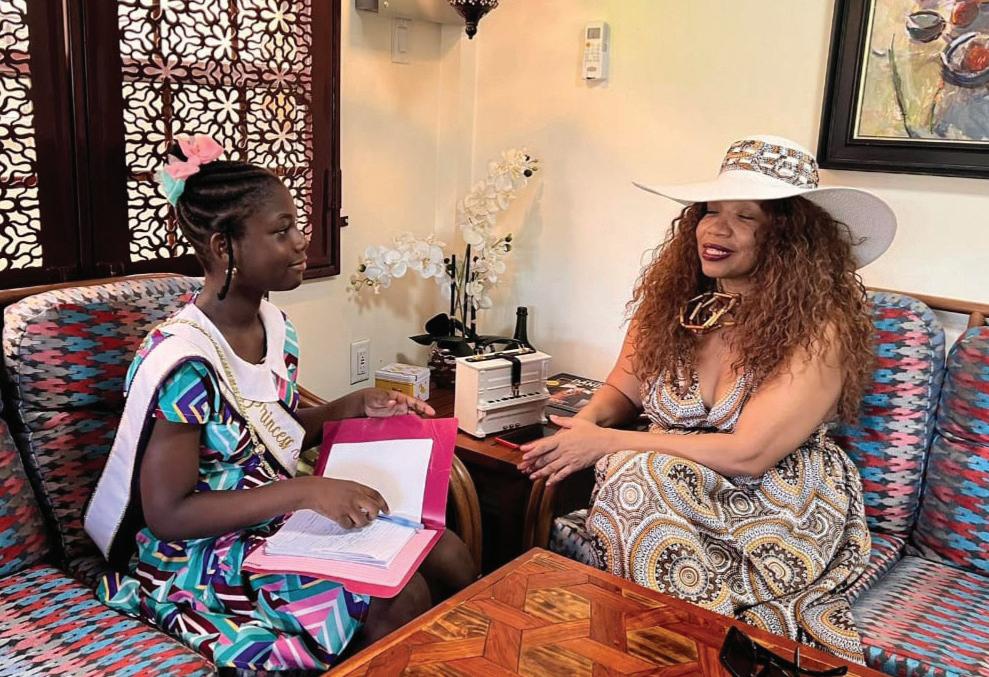

ternational Guyana 2023. Absolutely stunning young lady with a smile that will melt your heart. She has a presence with a warm heart and I believe that she will represent us well in Jamaica next month.
Naomi Roberts is a very pretty and shy young lady. One of the things I noticed about her from a few years
ago when she did the Model Image programme is how focused she is. I love the fact that she and her mother are doing this course together. She WhatsApp me to warn me that her takeaway for the first day will be long, lol
“First impression is one of the most important things
SEE PAGE XXIII
SHE couldn’t believe that it was the fifteen-year-old boy sitting in front of her right now.
He has grown into such a man!
Rachel took a while to find her voice, “T-that was quite a long time.”
“Yeah,” he said with a casual smile, “But I never forgot you.”
“Oh boy!” she exclaimed quietly and took a deep breath to keep her mind calm before responding to him.
“You were just a boy, and you left for a land of opportunities, new school, new friends, a great career and you still remembered me?”
“Yep.”
“That’s amazing!”
She had known he had become infatuated with her,
something normal for teenagers, but she had never let it show, continuing to work as normal with the class. When his grades started slipping because he was not concentrating on his studies, she decided to talk to him one-on-one. She had patiently explained to him that his studies were important for a good future and it would be quite pleasing to her to see his grades improving.
“Why would it be pleasing to you?” he had asked.
“Because I care about my students.”

“Not me, specifically?”
She had known she had to be careful when answering him.
“It would be against my principles as a teacher.”
He had gotten up, walked to the window and did not respond for a while and she had held her breath hoping she had gotten through to him to help him understand. He turned back from the window, picked
“You were a student who was going through a phase in your young life that goes away as you grow older.”
He looked at her and stated with a gentle smile, “Well I guess it wasn’t infatuation.”
“What?” she exclaimed quietly, “What are you saying?”
“I have come back after ten years and the first person I wanted to see was you, that’s why I went to visit the school.”
That left her at a loss for words again and seeing the disbelief on her face and her struggle to respond, he said, “You didn’t believe me so you found love and got married.”

She shook her head and took a deep breath to find her voice, “You were a boy, it would have been wrong of me to think that way.”
“Yeah,” he sighed, “I understand.”
And after a long pause, he asked, “Still married?”
She shook her heard and answered, an edge of regret in her voice, “Divorced.”
up his bag, smiled at her, and said casually, “I know what I have to do.”
“What?”
“I have to grow up and become a man, then I will get your special attention.”
She hadn’t answered. Sure he would have forgotten that.
But how wrong could she have been!
“I grew up and became a man,” he said to her, “But you did not wait for me.”
She looked at him, her mind in a state of disbelief.
He saw the flicker of pain in her eyes before she looked away and he said, “I’m sorry to hear that.”
She smiled wryly, “Are you really?”
He smiled at the tease and said, “Yeah, I’m sorry that you’re still feeling the pain of a broken marriage.” I can’t be happy about that if you’re sad.”
The sincerity in his voice unknotted a little, the tense feeling in her mind and she smiled just a little.
“I can, though, try to make you happy again,” he said in the same sincere tone.
For the first time, her eyes actually met his and what she saw there triggered a new feeling within her. She looked away and got up to stop what just happened. Bryan knew it was time to go but Nathan who had been quietly playing with his toys, got up hurriedly and asked Rachel, “Mommy, can he have lunch with us?”
“I’m sure he had things



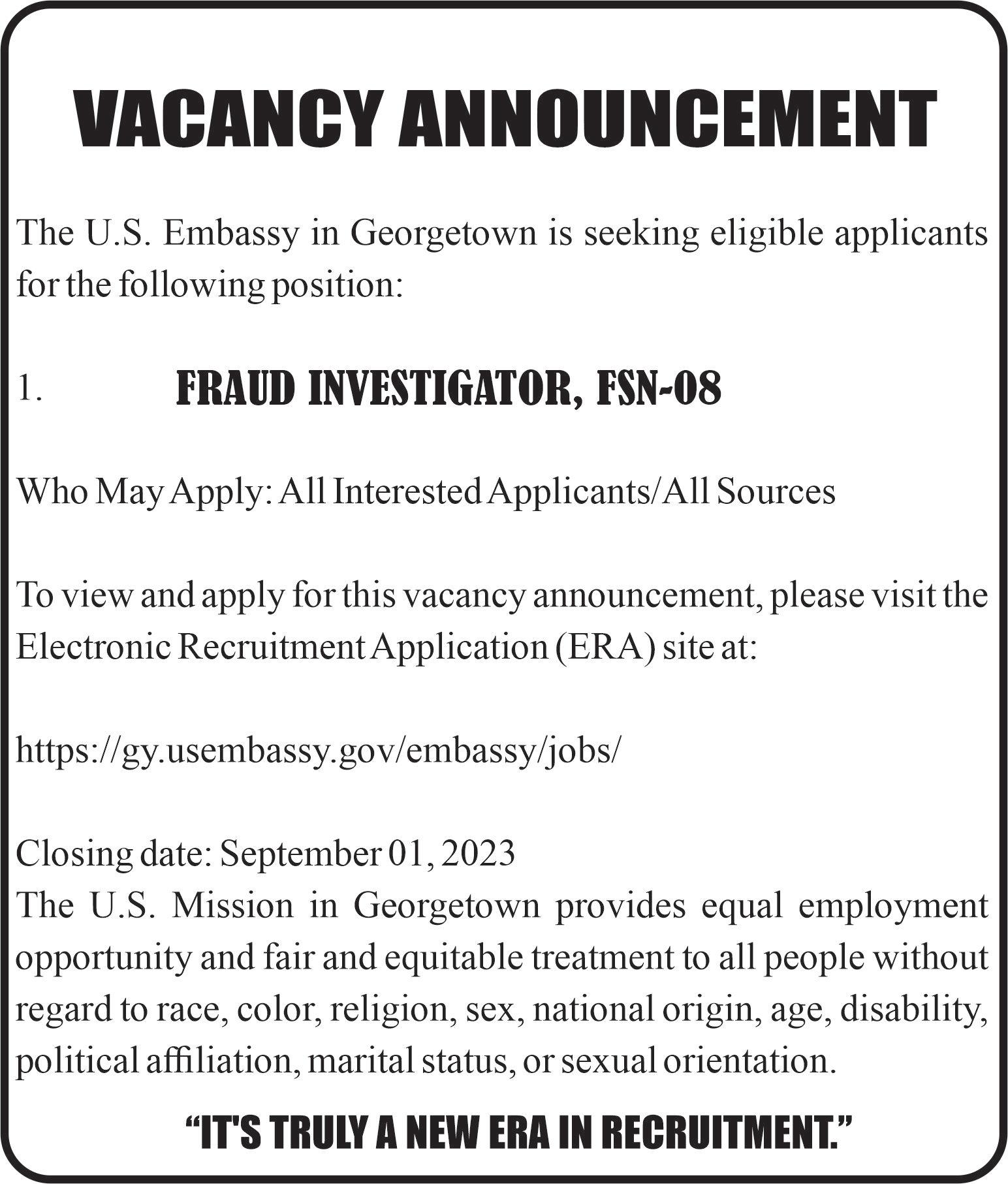


SEVERAL days ago, I witnessed dozens of people walk from Mahaica to Buxton on the East Coast Demerara (ECD) highway. They would eventually make their way to Parade Ground in Georgetown. Some were dressed in African cultural wear as they all marched to the sound of the drums, and they occasionally stopped at communities to offer libations.
Those people were part of the Association for the Protection and Preservation of the 1823 East Coast/Demerara Revolution Monument. And they were walking the same route some of their ancestors undertook exactly 200 years before during the 1823 Demerara Uprising. This walk was a way for the group to reflect on and connect spiritually with the thousands of people involved in the fight for freedom from the inhumane system of enslavement.
Researchers believe about 12,000 enslaved Africans from 55 plantations were involved in the uprising. They demanded their freedom but did so through non-violent means. The two-day rebellion was unsuccessful, with many killed after the colonial forces resorted to violence. In the grand scheme of the anti-enslavement movement, however, it was seen as a watershed uprising that helped herald the abolition of enslavement.
Since the walk, other events have been organised. There were reflections and academic discussions on the uprising, cultural activities, and even a solemn memorial led by President Dr. Irfaan Ali. The importance of commemorating this historical event is clearly recognised, and that’s great because it isn’t one that enough people know about.
I read about the uprising when I studied history at the secondary school level. Though I grew up in the Success, ECD community and spent some time with family in the neighbouring community of Le le Ressouvenir, the rebellion wasn’t something I knew about before then.
It was a striking realisation for me. I grew up in this community but never recognised how central Success, and the Africans who worked on the Success plantation, were to the uprising. It was there Quamina’s body was left hanging for months as a threat meant to deter any further uprising.
Even after learning about the uprising and how much the place I called home was connected to it, my interest didn’t go beyond reading about it for my academic studies. My interest returned in 2020 when a United Kingdom (UK) writer contacted me after reading some of my columns on reparations.
The writer eventually came to Guyana, aiming to write about the 1823 Uprising and how crucial it was in dismantling the inhumane system of enslavement. Travelling around with him, visiting Success and many other communities where the rebellion took shape, was a surreal experience. The magnitude of their endeavours became crystal clear to me just by appreciating the distance from Mahaica to Success and then from Success to Georgetown.
It also made me sad. Here was this very important historical event- important nationally, regionally, and internationally- yet, too many people remain unaware of what transpired and its significance.
We shouldn’t only know about such important events because we take a history class in school (though I am biased and believe everyone should take history classes). We should have immense national pride and we should be able to reflect on the struggles of those before us. I think that helps us to appreciate each other more, and it helps to keep us firmly rooted in our pursuit of a more developed Guyana.
So as we observe this bicentennial anniversary and as more events are organised, I hope that many more Guyanese will participate in the many activities organised and learn more about the fight for freedom.
If you would like to discuss this column or any of my previous writings, please feel free to contact me via email: vish14ragobeer@gmail.com

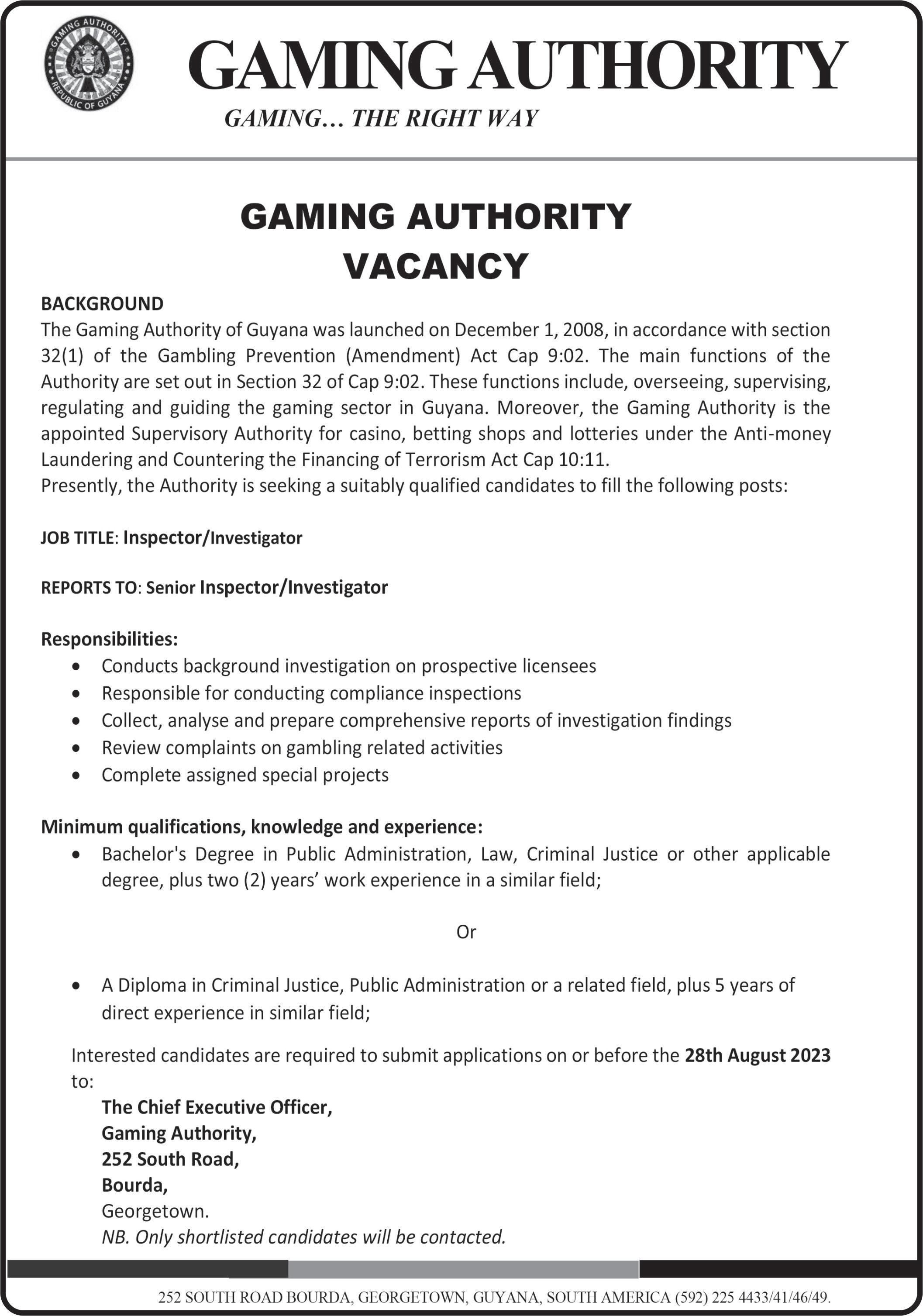





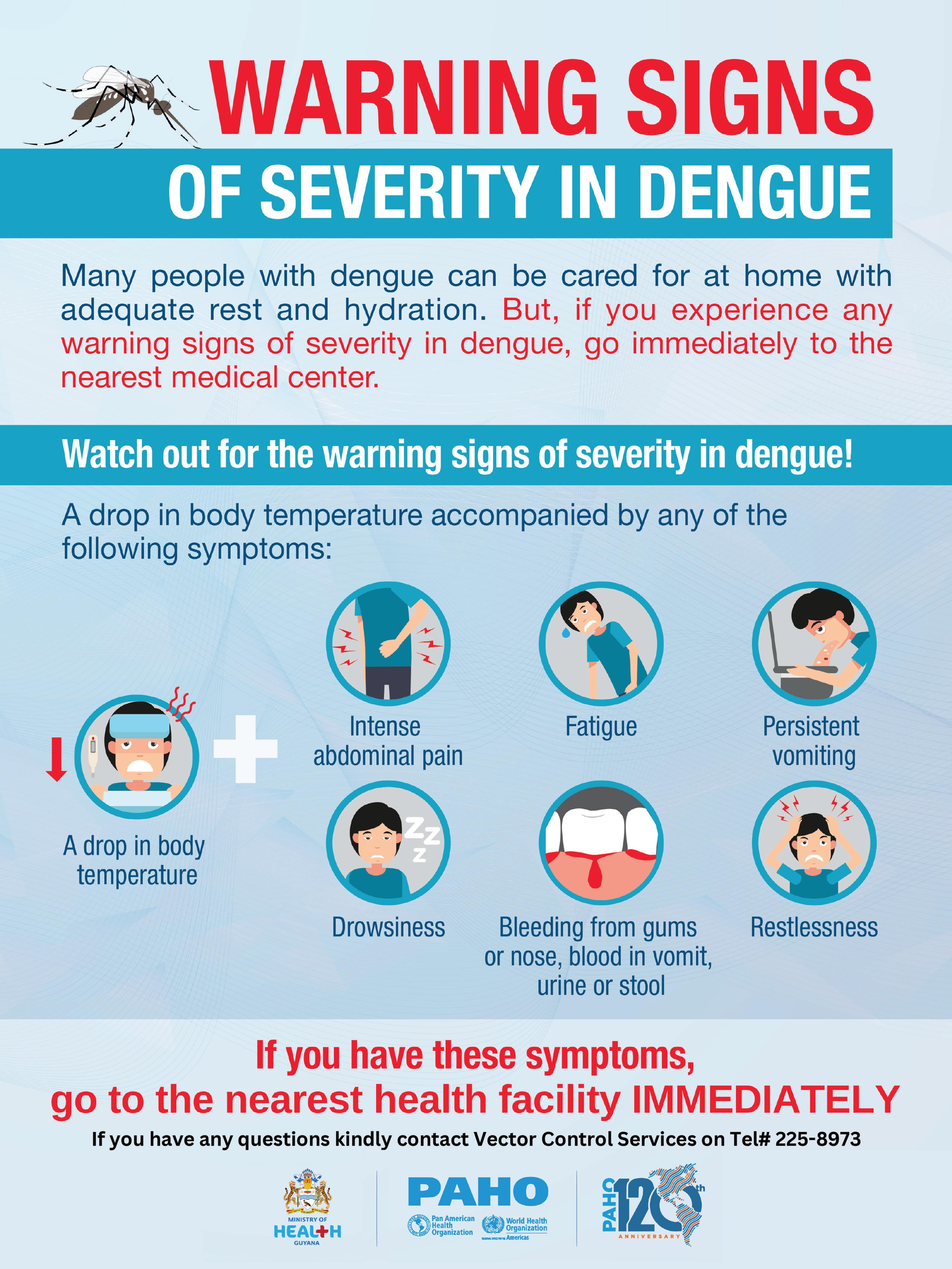
FROM PAGE XIV to do,” she replied hesitantly.
“Not quite, I can have lunch,” he said with a hint of mischief, knowing she wanted him to leave.
“Cool!” Nathan laughed happily.
They had lunch together, which was nice, Bryan enjoying the special meal and Nathan, a happy little boy. At the door Bryan said to him, “Come on, I have something for you.”
He gave him a cap, a T-shirt and an autographed basketball, all too big for a six-year-old boy.
“You’ll grow into them,” he said with a little laugh.
“Will you come see us again?” the child asked hopefully.
Bryan glanced at Rachel and answered, “I hope so.”
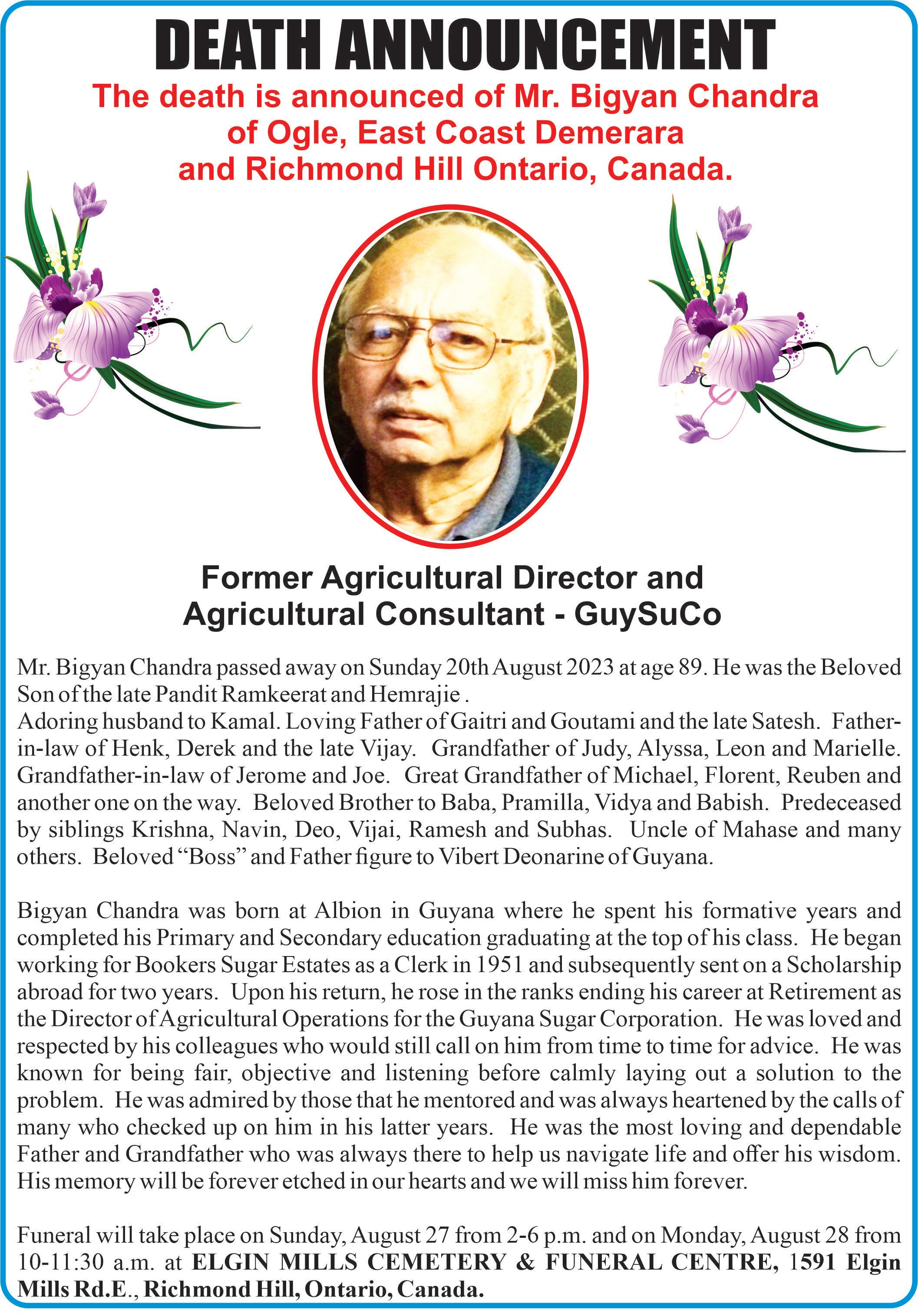
That night as Rachel tucked Nathan in bed, he said sleepily, “Mommy, I like Bryan, he’s a cool guy.”
“That’s nice to know.”
“Do you like him?”
“Hmm, he’s okay.”
His eyes closed to sleep but a few minutes later, he murmured, “I think he likes you.”
She laid sleepless in bed for a long while, thinking of all that Bryan said today. After ten years, he hadn’t forgotten her and came back to find her.
Was this love, true love?
“No it can’t be,” she told herself, “I had believed in love once, now today I am alone.”
She began working on her summer schedule and was in her flower garden pruning and replanting when Bryan stopped by. He had an engagement at a sports club on the upper Corentyne, so he did not spend long but shot some hoops with Nathan.
“I’m willing to offer my help with the garden,” he said to her.
“Thanks, but I’m doing okay.”
“You know, the more I can be around you, the better you can get to know me,” he paused then added, “for the man that I am.”
She hadn’t an answer to that and just shook her head a little, “Have a good day.”
She took a short break just after he left and sat down, taking a couple deep breaths to gather all of her thoughts in one place. She had been stunned by his good looks and refined body before she knew who he was and now that she knew, the image became stronger in her mind.
“I can’t let this happen,” she cautioned herself and went back to her gardening but stopped a short while later again, as a vision of his cool, casual smile flashed before her eyes.
“Damn it!” she expressed in frustration, pulling off her garden gloves and throwing them down.
“Mommy!” Nathan called to her from a shady corner he was playing in, “Are you okay?”
“Yeah, babe,” she answered.
She sat with him a little and as she got up to continue her work, he said, “Remember I told you that I like Bryan?”
“Yes.”
“Well today, I like him better,” he said with a joyous little laugh.
Seeing that joy on his face touched Rachel’s heart for someone has come into his life whom he liked.
“If he gets close to him, what do I do?”
To be continued.

FOR most of the 20th century until the 1980s, when the Guyana economy collapsed, the economy rested on the tripod of sugar, bauxite and rice, with rice being the most junior partner. Today rice has become more important to Guyana’s economy than either sugar or bauxite and promises to be more so in the next several years.
In the last quarter of the 18th century, some sugar plantation owners wished to experiment with rice as a food for slaves and so they imported rice from Carolina in the USA.
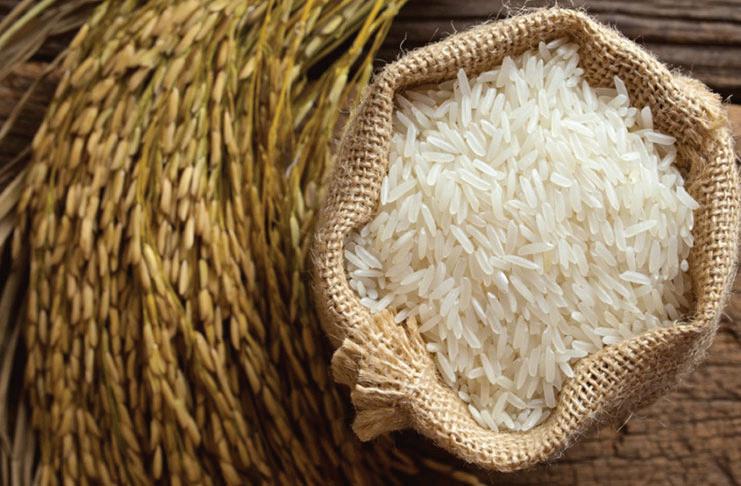
The experiment was unsuccessful, but some escaped slaves had taken some of the rice with them and planted it in their hideouts along the river banks. The slave hunters traced the escaped slaves by their rice cultivation, and the escapees discontinued their rice cultivation. The rice planted was short-grain, and rice cultivation disappeared from Guyana for almost a century.
After the African slaves were emancipated, indentured immigrants were brought in to fill their place and the largest group of labourers came from India. Rice was a staple food for the Indians, and though some rice was initially imported, this was soon discontinued and some Indians unobtrusively attempted to grow it. They had to grow it outside of the plantations on which they worked, and if they were near a river or creek, they grew it on the banks.
By the middle of the 1860s, many indentured labourers settled in the colony at the end of their contracts and they grew

more rice than they or their families needed and had a small surplus sold in the markets. It should be mentioned that the seed rice was brought from India and was a long-grain variety different from the short-grain Carolina rice, which was grown in the
supplying CARICOM’s food requirements.

Rice is an important part of the Agriculture Sector. President Dr Mohamed Irfaan Ali recently said at the launch of a high yielding variety GRDB16, “The Rice Industry accounts for approximately 60% of
18th century. The Guyana industry continued to use the Indian long grain, and by the end of the first decade of the 20th century, some rice began to be exported to the Caribbean islands. This export trade kept expanding and Guyana also became self-sufficient in rice.
With the discovery of oil, the founding of the oil industry, and the earning of oil revenues, there was a strong pull to focus on the lucrative oil industry and ignore the former industries that had supported the country and quietly allow them to decline.
Had it yielded to the pull, Guyana would eventually have been infected with the Dutch Disease as in Venezuela. Guyana is meeting the threat of the Dutch Disease by strengthening its old industries and founding new ones; in other words, Guyana is continuing to diversify its economy while at the same time building its oil industry. In this effort, Guyana is strengthening and expanding its Agriculture with one goal:
the country’s agricultural exports. We are working on expanding our rice production and are projecting rice production to grow by 79% to one million metric tonnes by 2025.” Dr Mahendra Persaud, the Chief Scientist of the Guyana Rice Development Board (GRDB), in his remarks at the launch, endorsed President Ali’s projection and said that, with the new variety, Guyana’s rice production levels will increase tremendously and pointed out that Guyana is one of the small group of rice producers who could produce over six tonnes per hectare.
“I would like to see,” said Dr Mahendra Persaud, “our productivity increasing constantly, hopefully achieving seven tonnes per hectare in the coming years. This candidate variety we are launching today has demonstrated the good partnership between the researcher and the farmer because, without the farmers, we couldn’t have achieved the type of results we have today.”


SERVICE delivery is an essential aspect of business or public relations. Understanding the value and significance of how service providers deliver their services to the customers and clients is important. I know various components make up the entirety of effective service delivery, but I’m not writing this column section to enlighten you about them—at least not this week. For now, I’d like to focus on the importance of practising non-discriminatory behaviour and ethics while providing effective public service. I’ve stood in lines where the service provider appeared to be “nicer” to the customers because they looked a certain way.
This happened with hygiene/physical appearance, race, ethnicity, persons living with disabilities, gender, or some form of prejudice and discrimination. This has always irked me to my core—no matter which country I’m in or the service I seek. Discrimination may come directly or indirectly. Direct discrimination occurs when they treat you differently or worse than others because of your characteristics, appearance or persona. Indirect discrimination, on the other hand, involves a policy that may look fair to all, but in reality, it puts a specific set of persons at a disadvantage.
Discrimination is against the law if it’s evident in public spaces such as registered clubs, work, education, provision of goods & services and accommodation, according to Anti- Discrimination NSW. No one should be made to feel excluded, judged or mistreated because of how they look or who they are. It’s unfair and even unconstitutional. Service delivery providers in Guyana’s public and private spheres ought to create discriminatory-free environments. It starts with employing persons that won’t enforce their personal beliefs or prejudices onto others. I shouldn’t have to ask persons of another race to call to inquire about rent and prices on my behalf.

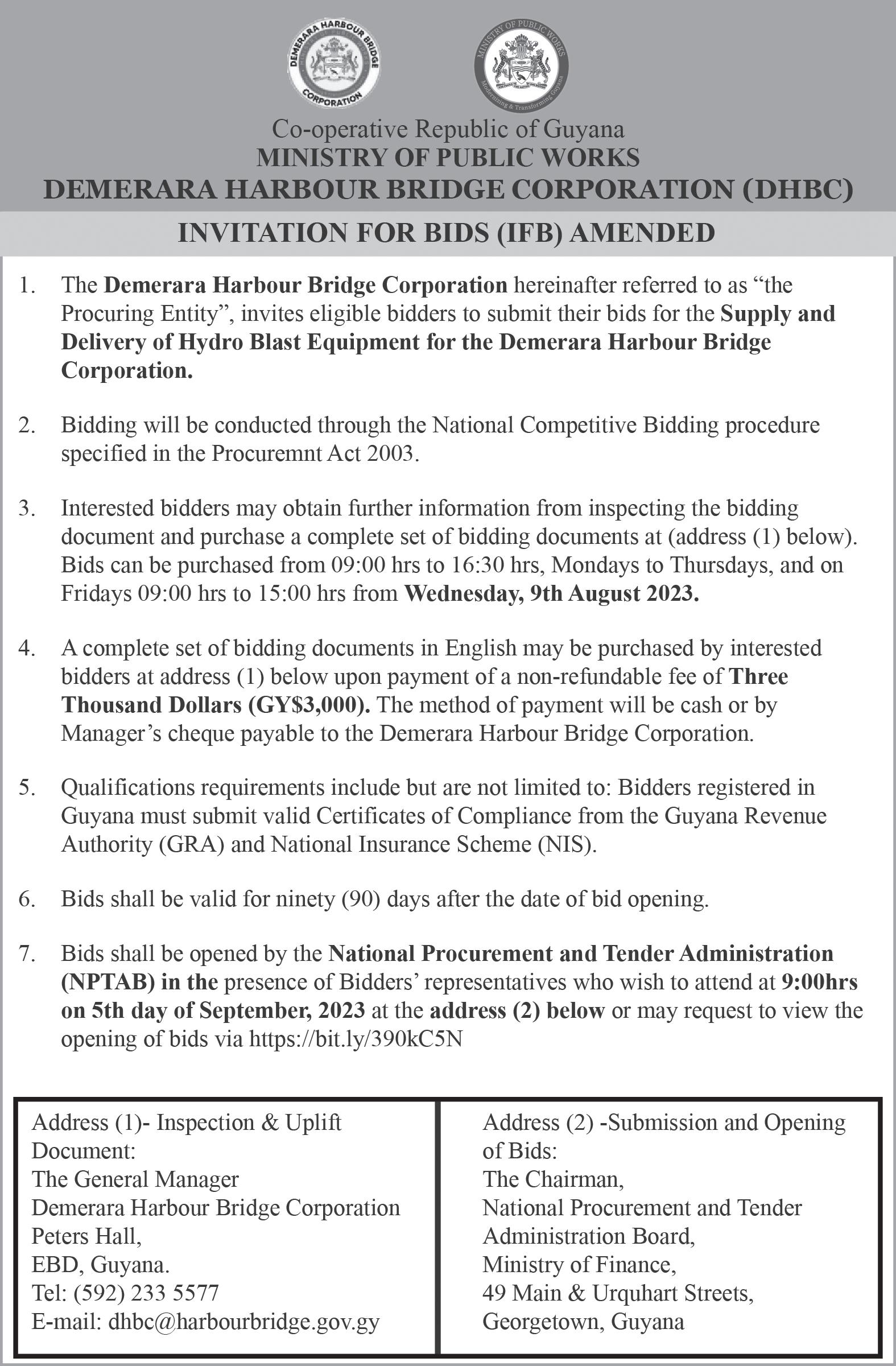
I shouldn’t have to be afraid of a consultant increasing their rates because of how I look. I shouldn’t have to overlook how others are treated with the best of manners while I’m treated with disdain because of a specific characteristic of mine. That is unacceptable, especially in this given day and age. I urge you all to learn about your rights—at all public and private institutions levels. I urge you not to be afraid to speak to the necessary authorities about your concerns. There should be no fear of further victimisation. It’s either you can serve objectively and effectively or don’t do it at all.
You, as every citizen of this land, deserve to be treated with respect wherever you’d like to seek services. It is my hope that we practise a better customer service and service delivery approach in Guyana and across the world. We’ve come this far, only to still not grasp some of the essence of what is required of us to remain humble and respectful human beings. I hope we can do better.
FROM PAGE XIII
when meeting with someone for the first time. How someone views/ interprets you will determine how they treat you at first. This includes how you dress, enter the room, your energy and your speech.
On important occasions, like job interviews, people look at how you dress for the job. Your qualifications are the second thing they will see. When it comes to shy people who do not have a natural smiling face, pretend you are in an audition as a smiling person.
Echoing dealing with matching your level with the person you are conversing with. In this topic I learnt of 3 levels of speech:
● Acrolect (being the highest level)
●Mesolect
●Basolect (being the lowest level)
Handshakes to keep are short. Always use your right hand.

When introducing someone, you just need to remember the law of gravity. The superior person’s name is always called first. Unless when calling them to do a speech, the superior person’s name is called last. When dealing with persons of different cultures, it is better to know their culture than to unknowingly disrespect them. Always hand your business cards facing them. However they hand it to you, you must receive it the same way. As for flags, the hosting country’s flag must always be on the right-hand side. Imagine her take, after all four Saturdays? I LOVE IT!”
Part of my Saturday evening was spent connecting some mentees from Africa with the Mentors from the USA and that was awesome. I will amplify that later because It needs more than just a few sentences. Sunday morning, I woke up with great intentionality to make Sunday a masterpiece. Early meditation always sets the pace for a day of elevation. Prayers and worship, then sermon online, continued to add to a relaxing Sunday. I had to see another pageant delegate, but it was 11-year-old Renesa Lewis this time. She is competing in the Miss Princess Guyana Pageant on September 24 at the National Cultural Center. I must commend Nelson, the Founder of this pageant, for the determination, consistency and discipline he has exhibited over the years. I attended the launch, which was very impressive, and my entire lineup of adorable young ladies stole my heart. The activities planned for the pageant will contribute to the well-being of all these girls so they all are winners. One of the challenges is to have an interview with an Iconic Guyana Woman and submit an essay. Renesa and I had a wonderful time together as I went down memory lane. We both realised that we are the firstborn, first pageant at 11, can’t sing even if our lives depended on it and a few other things. I shared my experience in my pageant at 11 in my hometown, Bartica and encouraged her to view winning in a different light. I was first runner up in the pageant, but in my mind I won because it was the beginning of my journey to becoming a confident woman. I also advised her to enjoy the journey and build relationships because that can benefit her for a lifetime. This interaction brought back years of pleasant memories of my life, which set the atmosphere to interact with some of my mentees.
We sometimes meet at Oasis to have drinks and a snack while sharing what is happening in our lives and our future plans.
We created some other invaluable life experiences. I am super proud of the intentional people in these pics. I felt empowered and enjoyed the positive energy that was deposited. The compelling stories were riveting and encouraged me to continue to share the tools to empower others. Sherica Ricci Ambrose refers to us as a family and I totally agree with her. Someone shared about manifesting the car she decided after the Confidence Becomes You course, and now she is going after the house. Others shared about promotions, business, health, career etc. It is possible for us all to live our best lives no matter what.
I am anticipating another transformation in these upcoming courses as we continue to celebrate this beautiful journey called life BEYOND THE RUNWAY.
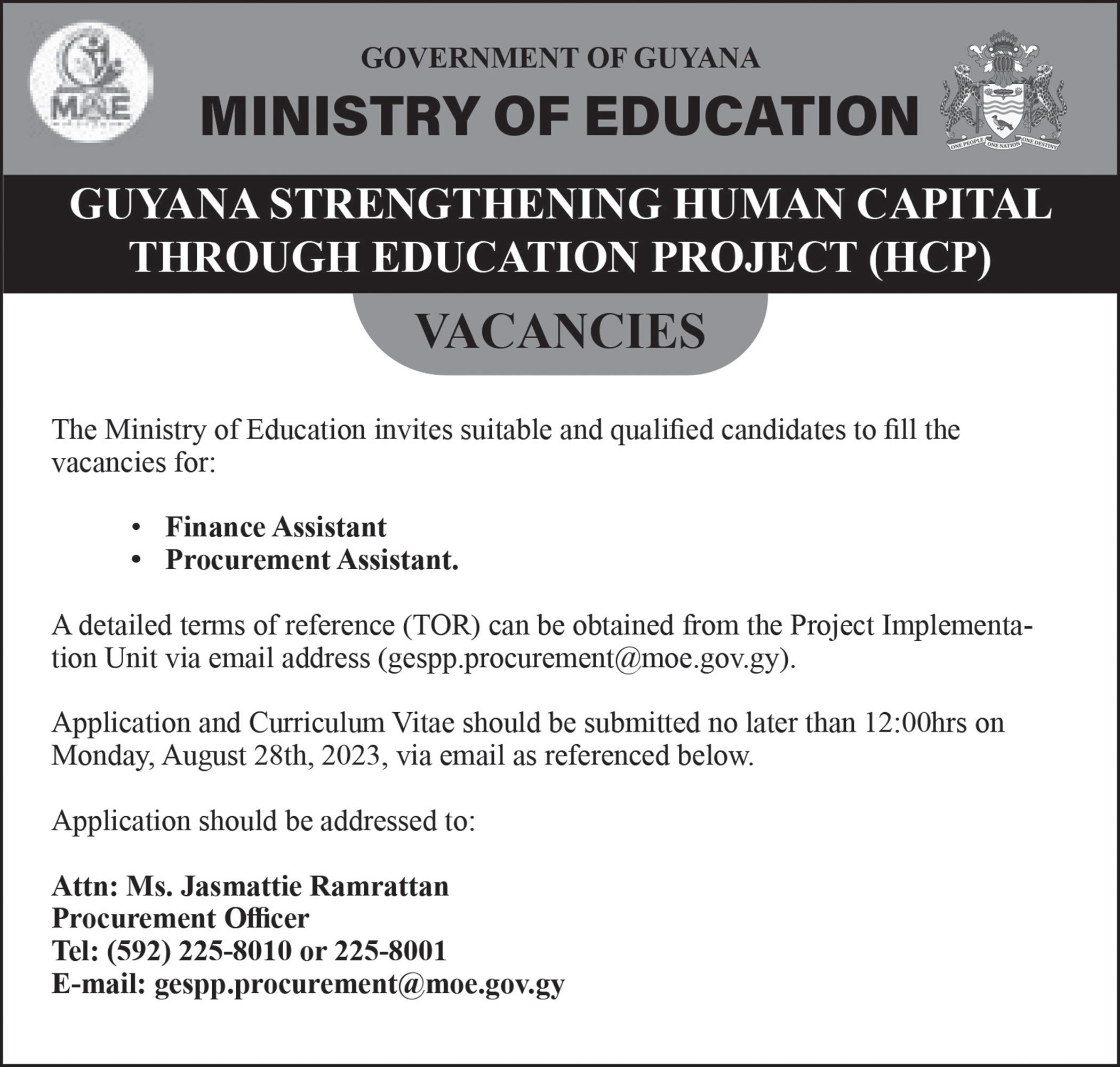
FROM PAGE II
overwhelming and it provides customer satisfaction from Mondays to Saturdays except on Sundays and holidays.

Growing up, Fung disclosed that she came from humble beginnings and has two brothers and three sisters, one of whom passed away and she was brought up by her mother alone since her father was bedridden.
Fung stated that her father passed away when she was 19 years old and her mother raised them well to learn to be contented and work for what is needed.
It is now her time to take care of her mother,56; her immediate family is her constant support system, and she is grateful for that.
The Collaborative Space-type business has, in the past few years, become a popular structure local-
ly for allowing small businesses to have an affordable storefront or pickup location for their customers.
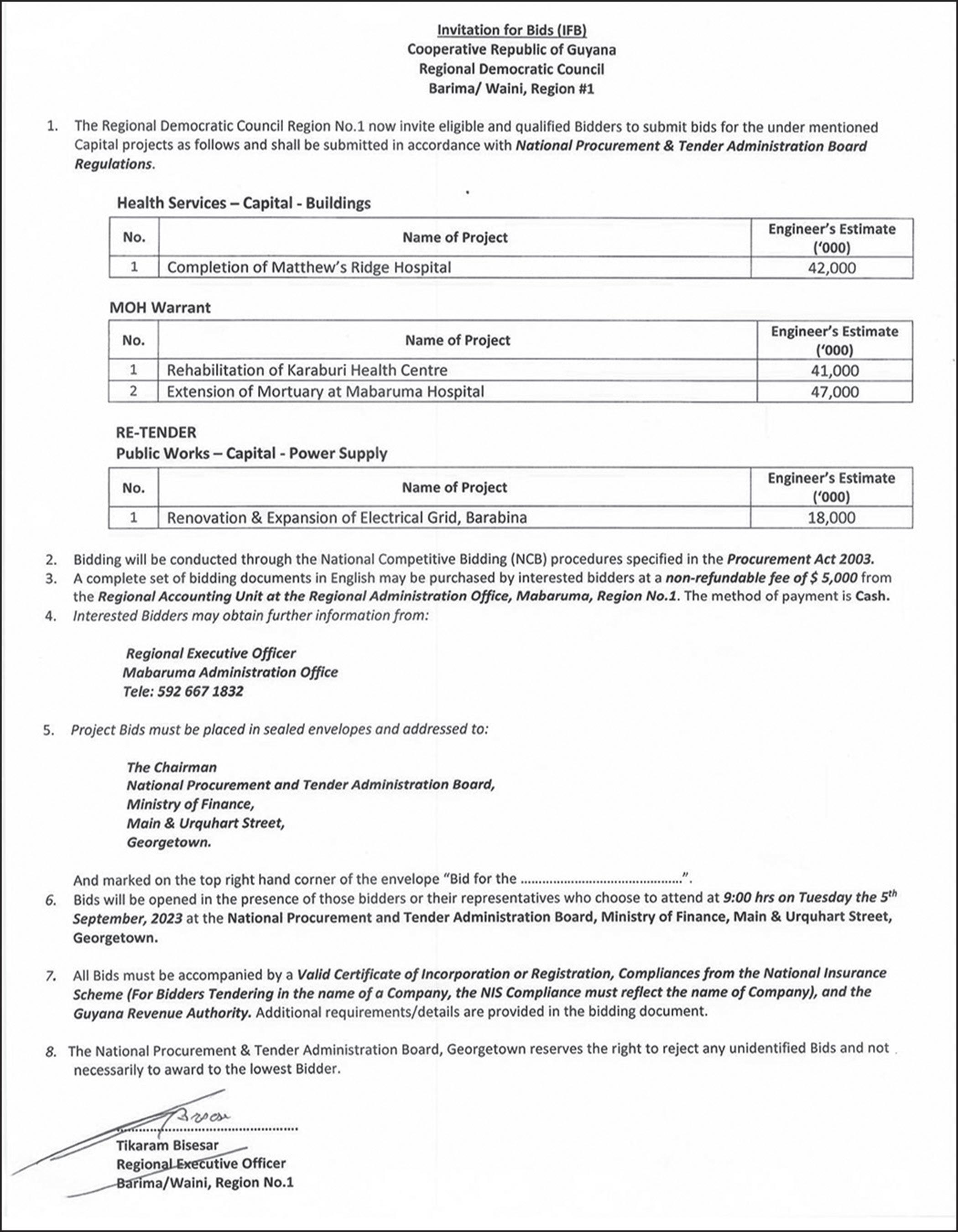
Feme joins a few other local businesses with the same structure, including Babe Cave, Sach Stores, Collage and Save Space.
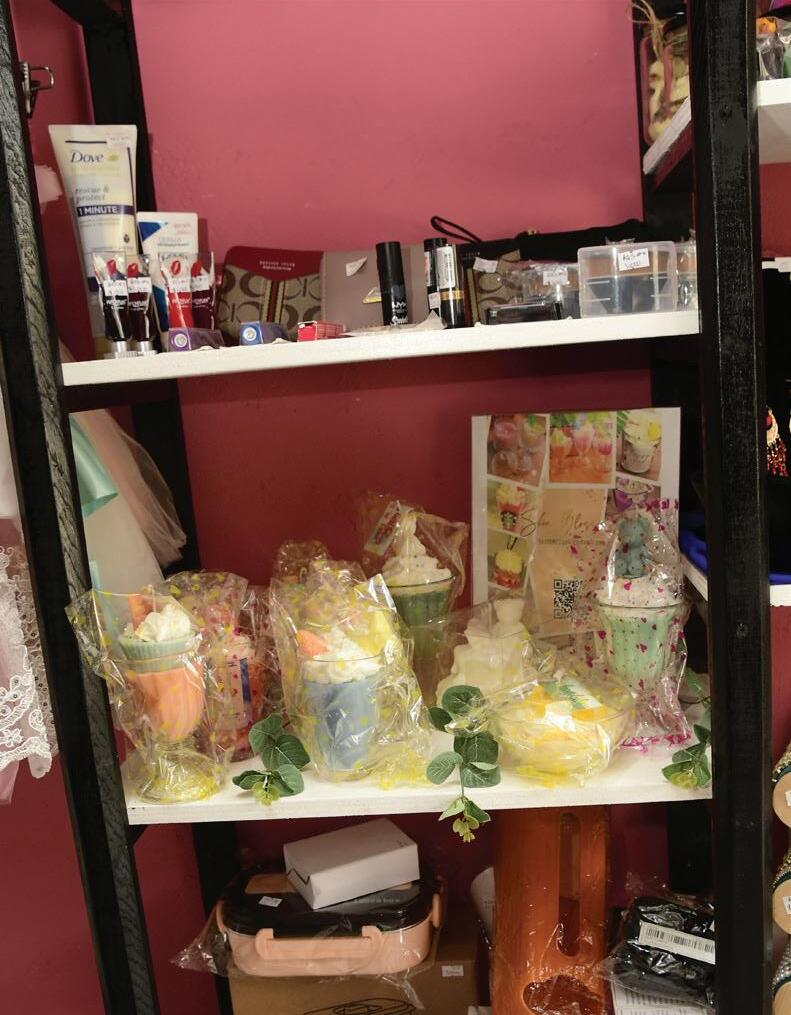
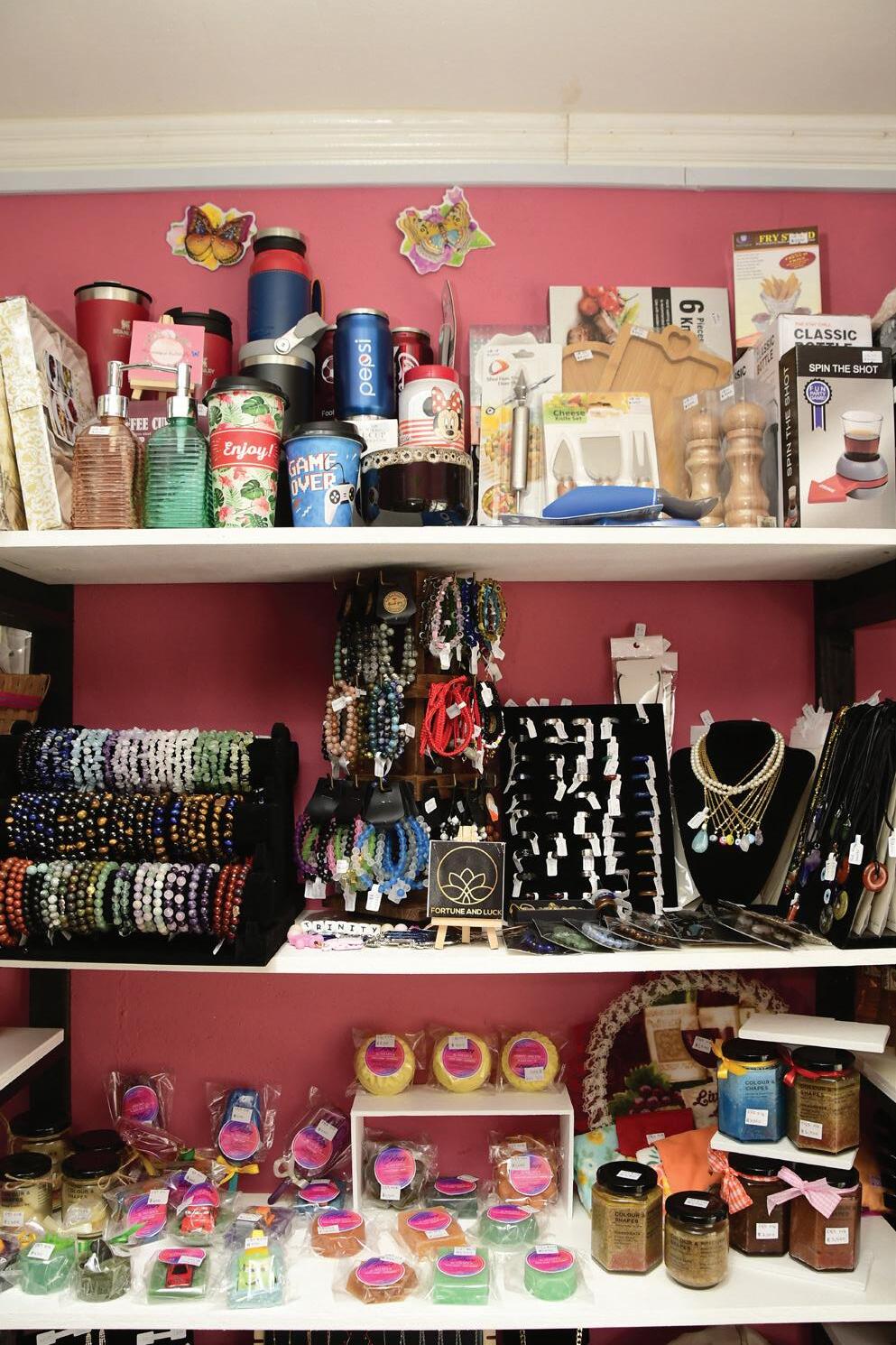
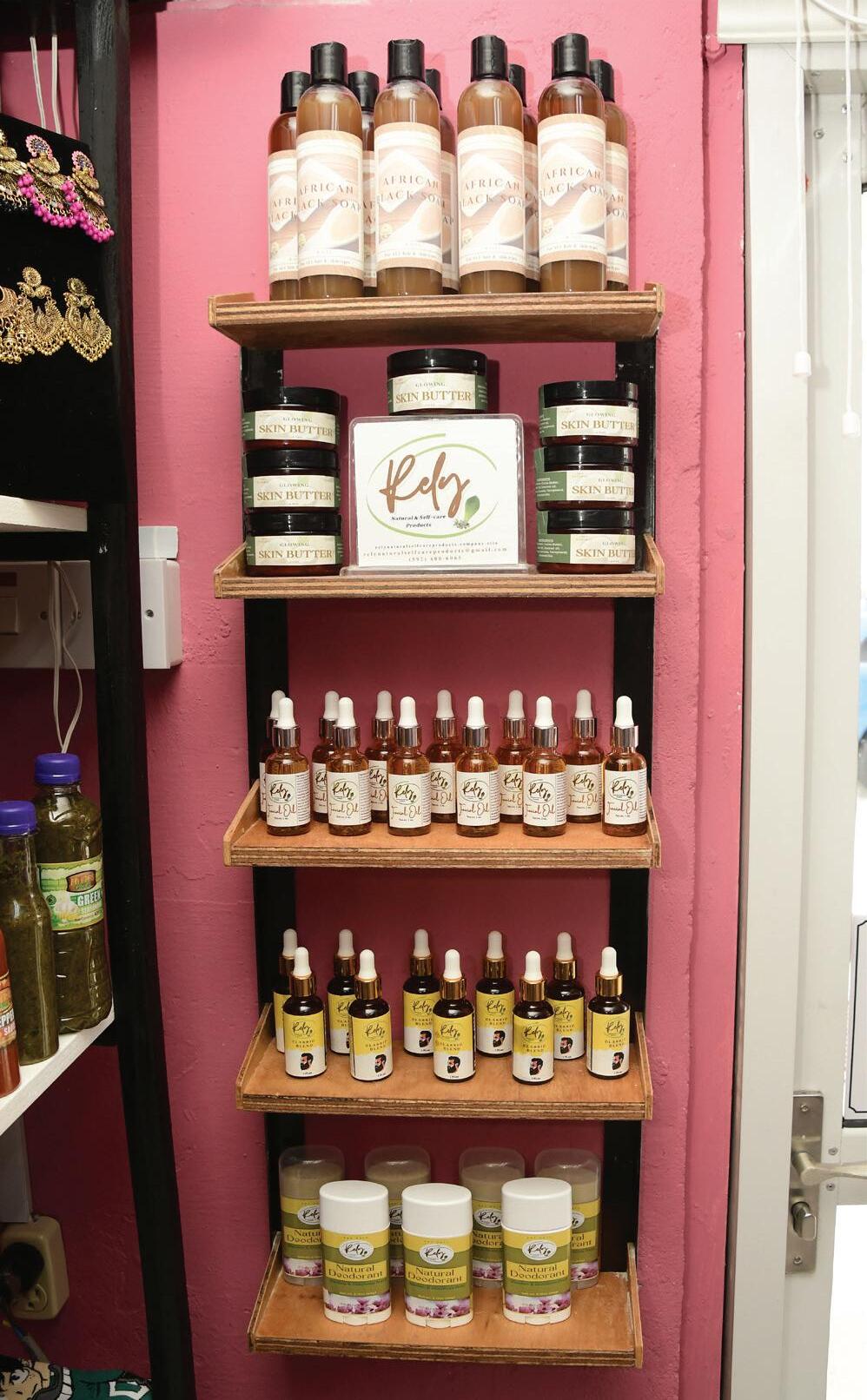
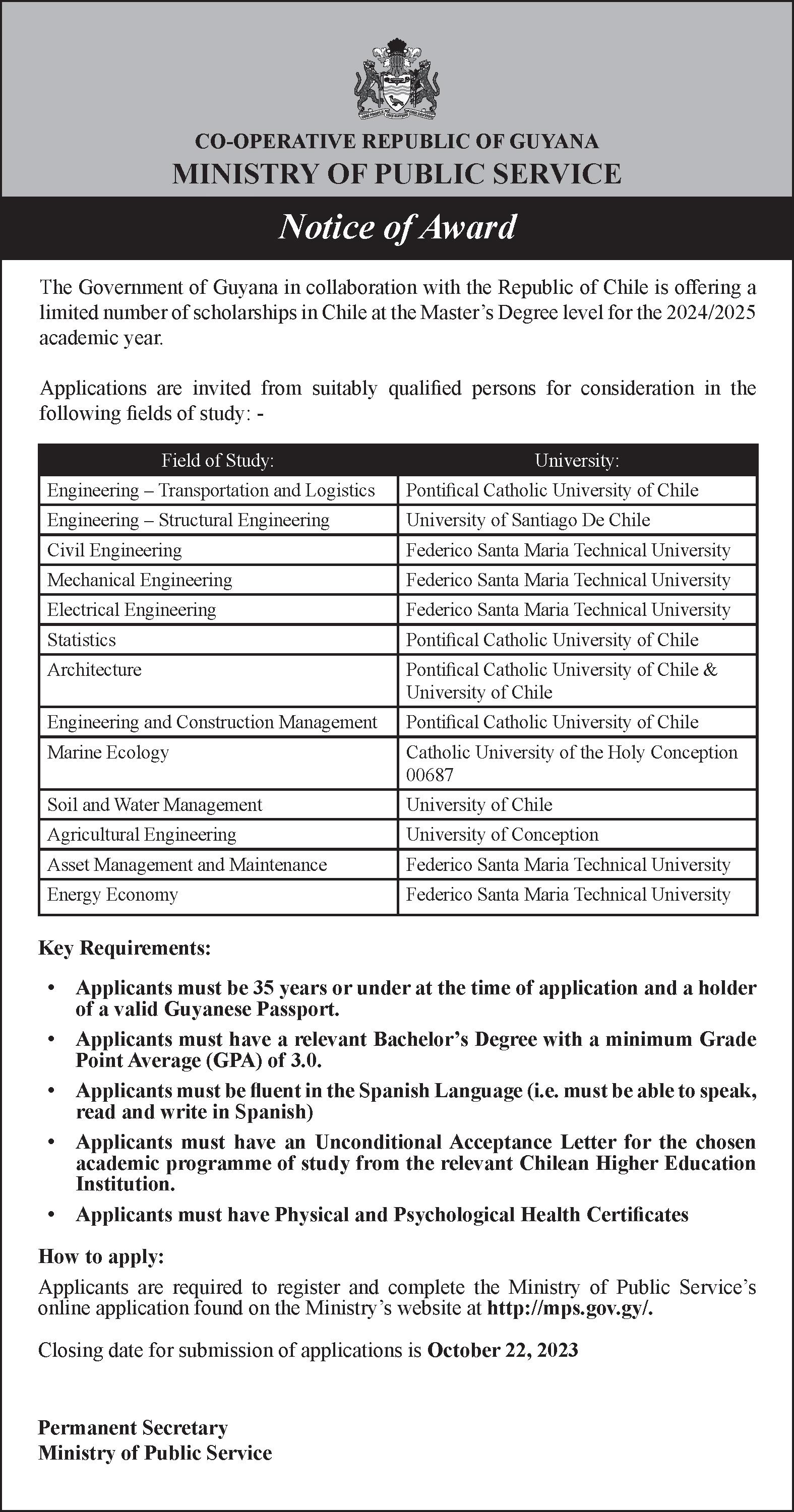


















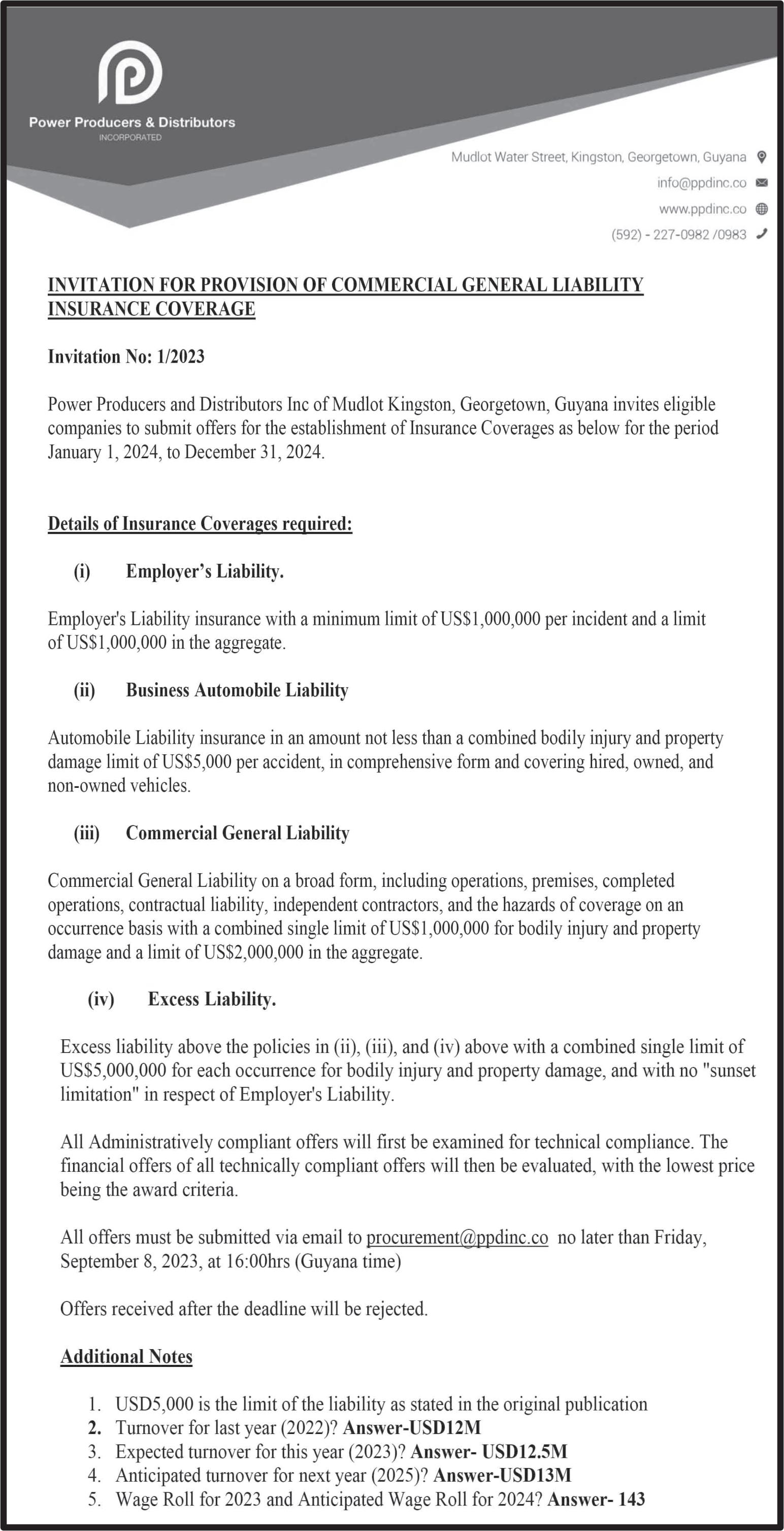



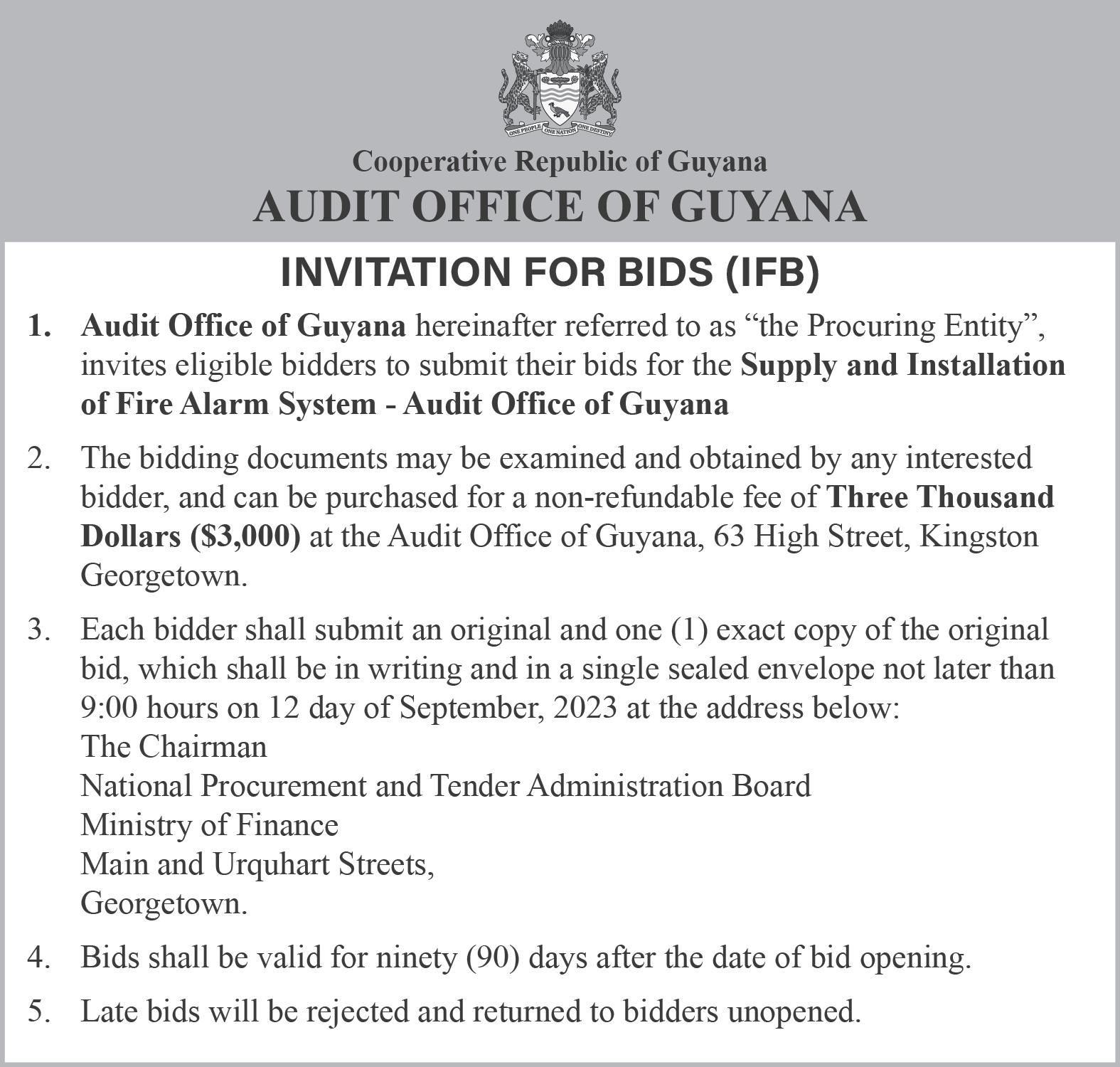
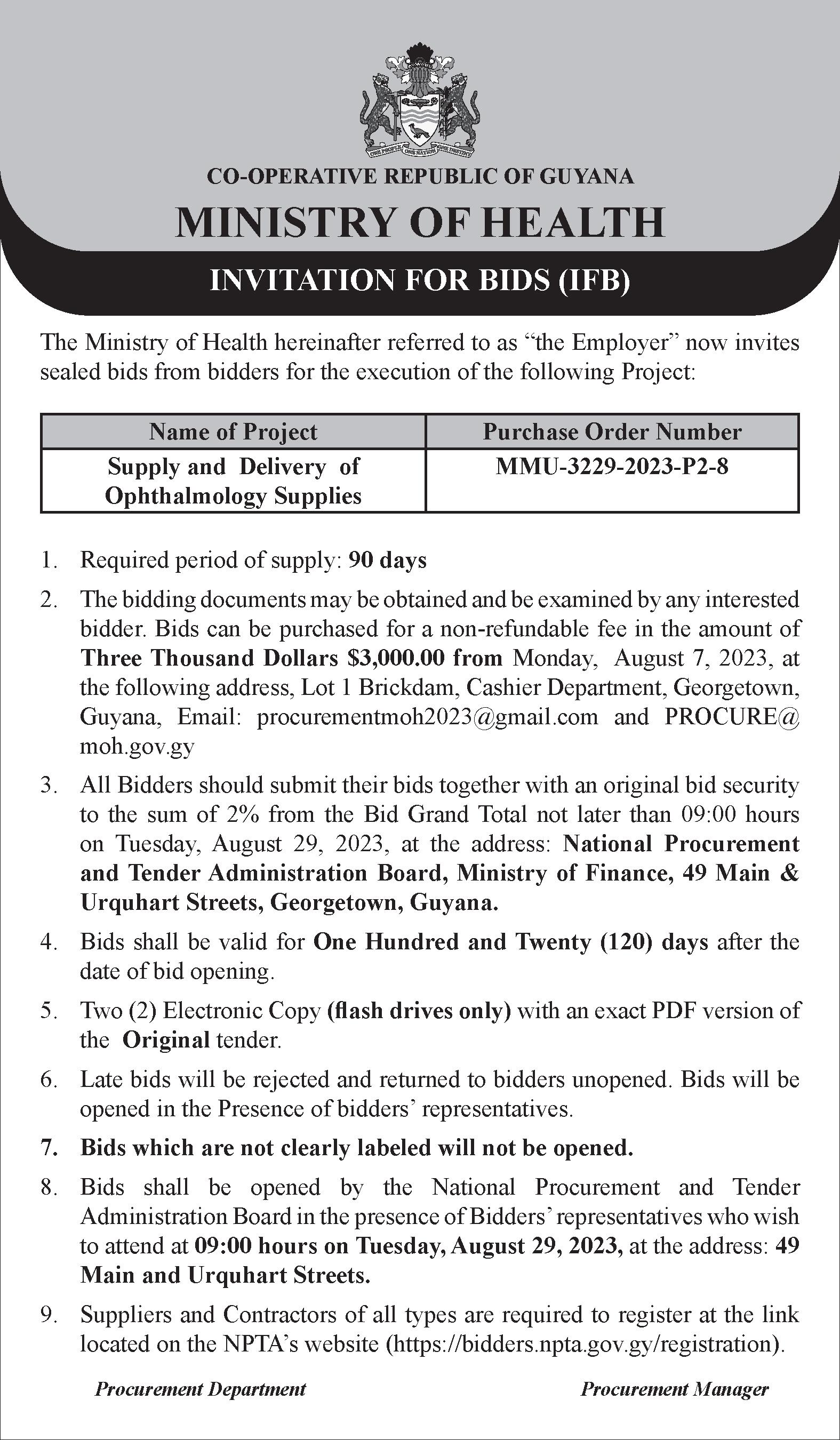

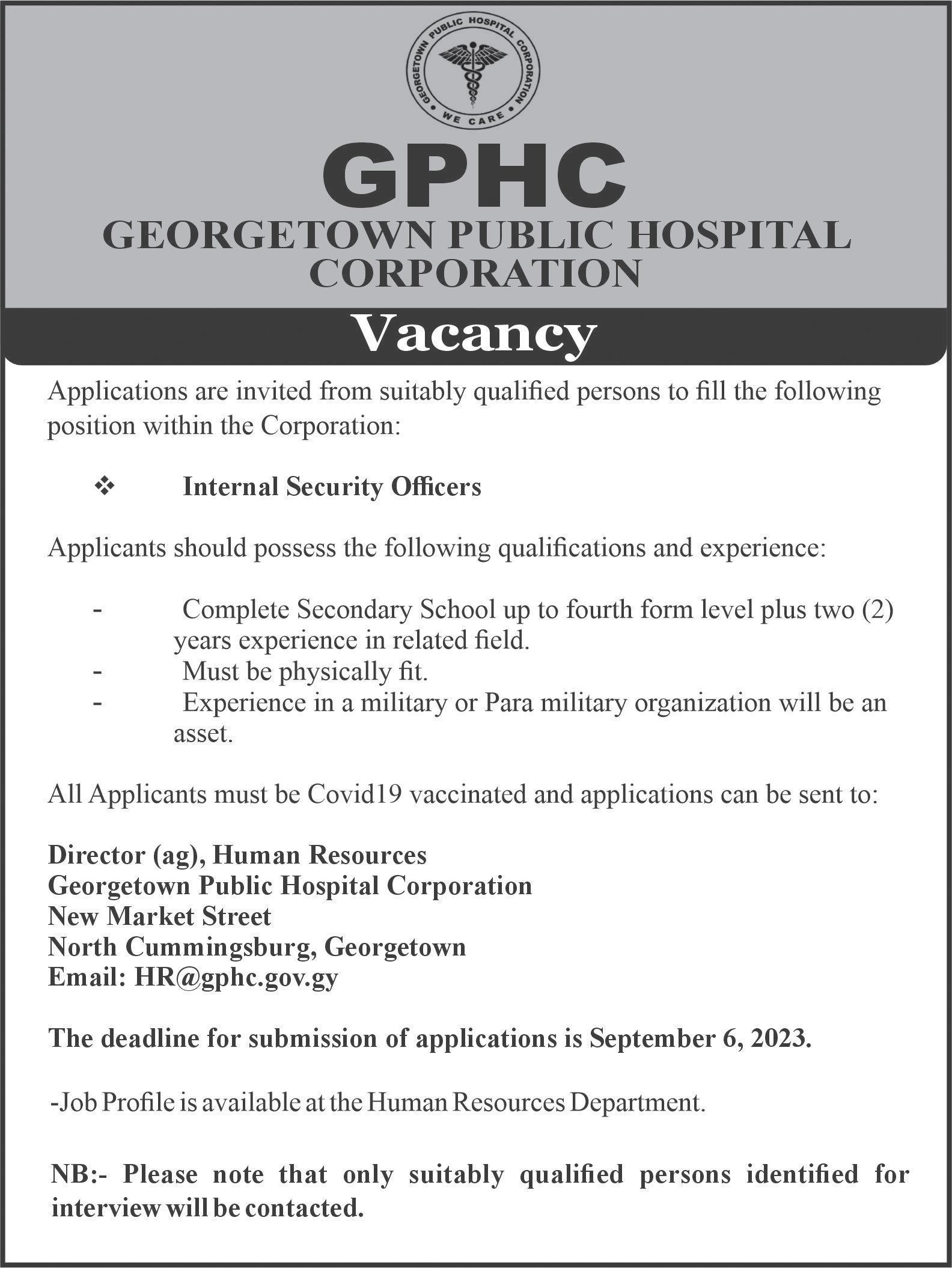
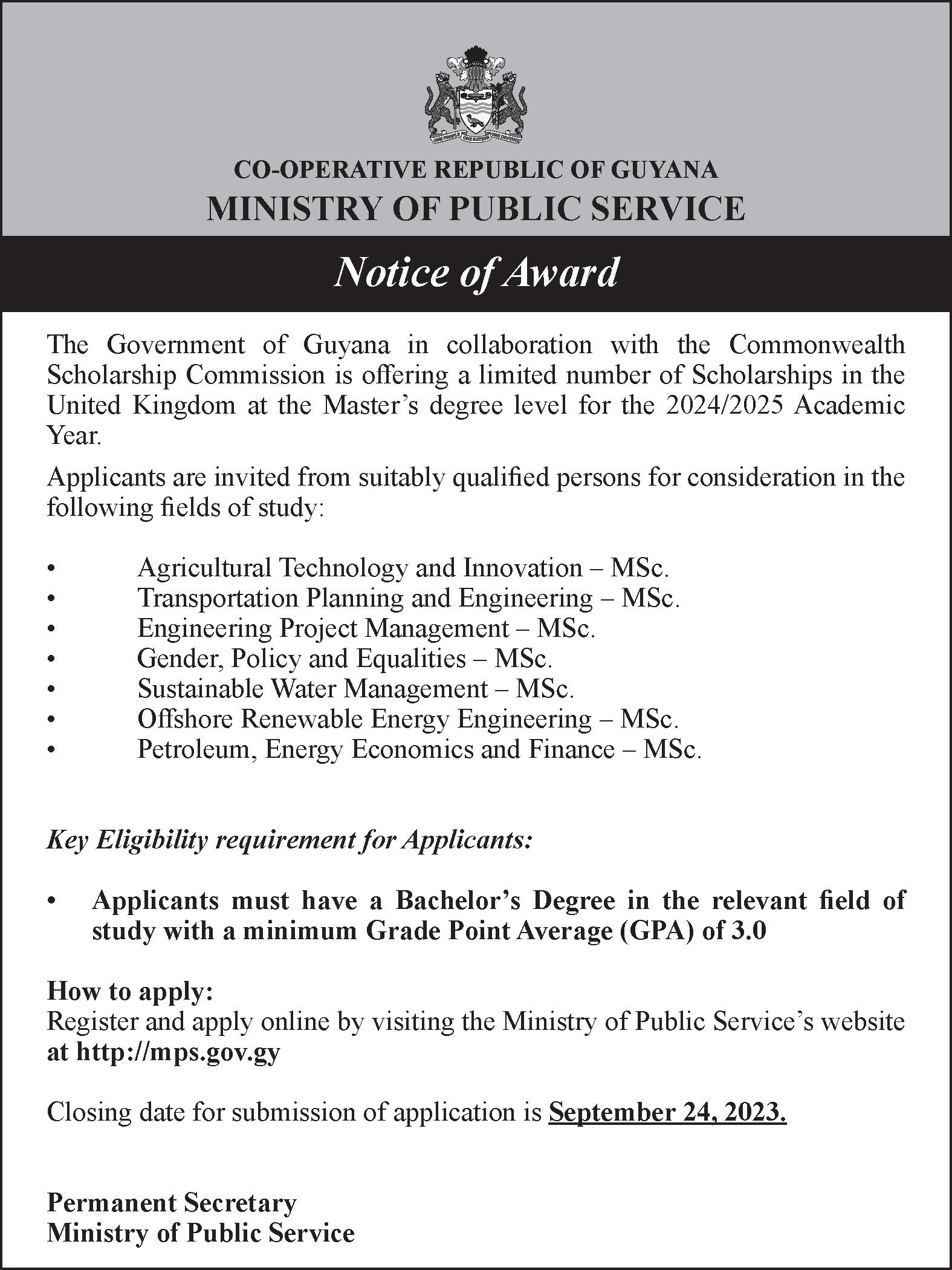


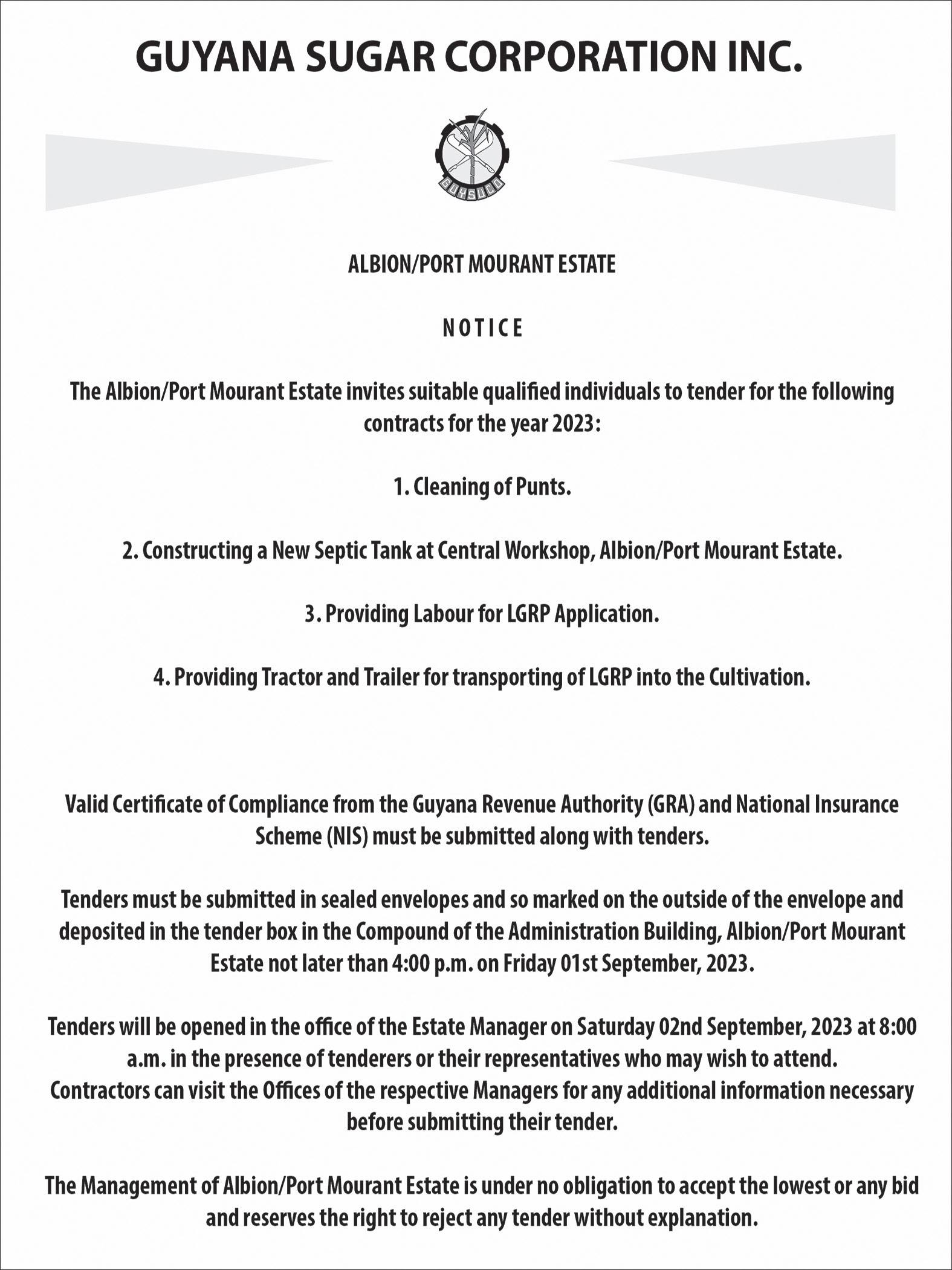

Still glides the Stream, and forever glide; The Form remains, the Function never dies.
WILLIAM WORDSWORTH (1770- 1850) The River Duddon, xxxiv. Af-
August 27, 2023
Welcome dear friend.
To improve your reading techniques, you have earlier mastered inference to discover the meaning of
unknown elements. It is now time to master understanding relations within the sentence, especially within a new text. The importance here is to get an immediate grasp of sentence structures especially in the case of texts with relatives, embedded clauses and complex structures. This is best approached by looking first for the ‘core’ of the sentence (subject + verb). Be wise.
Love you.
GRAMMAR
Subjects joined by ‘or’ or ‘nor’ Whenever a compound subject is joined by ‘or’ or ‘nor,’ make the predicate agree with that part of the subject that is closer to the verb.
Precaution: The best way to treat this is when a singular and a plural are joined by ‘or’ or ‘nor,’ the preferred practice is to place the plural after ‘or’ or ‘nor.’
Examples:
1. Neither Daisy nor her assistants have the big-print World Atlas. (Question: Which part of the subject is closer to the verb? Answer: assistants. Therefore, the verb ‘have’ is correct.)
2. Her assistants or Daisy ‘has’ the large-print World Atlas. (Question: which part of the subject is closer to the verb? Answer: Daisy.
3. Are you or Jackson responsible for the inputting error? (Question: Which part of the subject is closer to the verb? Answer: you. Therefore, the verb ‘are’ is correct.)
Reminder: Remember to find that part of the subject that follows ‘or’ or ‘nor’ and you will be sure to simplify predicate agreement in such cases.
Something to Do
֎ The following sentences have compound subjects joined by ‘or’ or ‘nor’. Choose the words in brackets that correctly agree with the subjects.
1. The leader and her assistants (has, have) the authority to sign cheques over $15,000.
2. For each audit, the auditor or the company treasurer (receives, receive) the original copy of the report, and (his or her, their) immediate supervisor always gets a copy.
3. At least once a month Harrison or Samuel (purchases, purchase) supplies for the senior staff kitchen.
4. Neither Mrs. Gregory nor we (wants, want) to take this case to court.
5. William Williams or his sister (is, are) responsible for buying stationery.
6. Either a lawyer or an accountant (is, are) to be asked for (his or

her, their) opinion.
֎ Correct the predicates in the following sentences to make sure that they agree with their compound subjects.
1. Joycelyn, Rosalin, and Wellington have his or her tickets already, haven’t they?
2. Helena said, “Neither Mr. Bamsfield nor the athletes representative in this town has received his or her August issues.”
3. My van and my minibus is available to the group if you need it.
4. Elsie or Tomica has generally allowed me to use her or his equipment whenever mine is being serviced.
5. L. Ainsworth or his partners usually does attend the public hearings.
6. Either wood or plastic have been used in similar cases.
The throw-away spirit or the spirit of wastefulness has become part of America’s life and consumption only keeps rising. Besides, according to the economists, we depend so much on this wasting and buying that people will probably be encouraged to consume even more in the years to come if the U.S. economy is to prosper. In other words, these marketing experts say that the ‘average citizen will have to step up his buying by nearly fifty per cent in the next dozen years, or the economy will sicken.’ This means that the producer of household commodities, i.e., a television manufacturer, will have to find some new means of making further sales since nine out of ten American homes nowadays have one television set. He could, for instance, launch a campaign to induce people to have a second TV set – or one for each member of the family - or he could produce a TV set so sophisticated that people will wish to replace their old set.
(Packard: “The Waste Makers”)
Something to Do
a) Find at least one instance of synonym.
b) Find at least one instance of antonym.
c) Find at least three indicators of equivalence. Which of the above words introduce(s):
i) an example,
ii) a rephrasing of what has been said before,
iii) an equivalent expression.
d) Using general words to cover more specific ones:
i) As an instance of ‘producer of household commodities’, the writer mentions ---------.
ii) If in the text, ‘marketing expert’ alludes to the word ‘economist’ used before in the text, then the relationship between the two words can be shown as ‘economist’ TO ‘marketing expert’. Find the term which relates with the term: producer of household commodities.
GRAMMAR
Solutions to Last Week’s language practice. The correct verbs are bracketed in the sentences.
1. Every man and woman in the dancing company commuting by airplane (is) covered by this insurance policy.

2. The language option students and their tutor (were) invited to visit our west wing to browse the new language teaching journals. 3. Georgeanna and Martha (do) not consider this visit important to their examination success.
4. Many a parent and teacher (has) become an executive through (his or her) hard work. 5. Every inventory clerk and warehouse manager (has) been bonded. 6. Her agent and advisor (is) her husband, Samuel.
A woman called me wanting to know if I could do anything about her son, who wakes up the household frequently at night with the sound of his teeth grinding. She wanted to know about this abnormal/al habit called bruxism.

The grinding or clenching of the teeth usually occurs unconsciously and spontaneously and may be repetitive at varying levels. It is practised almost universally, usually during sleep.
Bruxism has been shown to be linked to psychological stress as a necessary component. While mental tension provides the spark for the initiation of this habit and the fuel for its continuation, the original energy source comes from the individual’s genetically determined drives and needs. Any unsatisfied need or interference with one’s satisfaction, which may be experienced as frustration, anger, anxiety, or fear, may result in tension and the possibility of teeth grinding.
Other causes, such as epilepsy and high fillings, have been implicated, but their relation to psychological tension should be obvious. So, while mental stress may manifest itself anywhere in the body, the structures in and around the mouth appear to be the focus of this tension. The reason the mouth is selected for this habit can best be appreciated if one reflects on the infant’s activities.
Since the mouth is the means of receiving food and the earliest method of exploring the environment, it is intimately tied to emotions such as satisfaction, frustration, anger and anxiety. These early associations are significant and seem to last a lifetime and are why the mature individual reverts to the oral cavity during periods of stress by smoking, eating, chewing gum and grinding teeth.
The chewing muscles must receive psychological tension for discharge for bruxism to occur. The first reaction to anxiety is increased tonicity (contraction) in preparation for either fight or flight. Other stress-inducers, such as pain or the physical exertion of lifting heavy objects, may also induce muscular tension. The net effect of this uptightness and movement is a vicious circle. Suppressing our emotions during the day for socio-cultural reasons may cause clenching or grinding of the teeth, increasing the tension.
The habit may be helpful to the extent that grinding movements during sleep reduces the tension. Unfortunately, this type of discharge is highly inefficient, and the tension may accumulate. Incidentally, bruxism may be practiced even by persons without teeth.
What are the effects of teeth grinding? Most symptoms of the lower jaw joints are the result of the muscle spasm obtained through bruxism. The areas in front of the ears become painful and tender to the touch. In addition to localized discomfort, pain may be referred to neighbouring muscles in the scalp, neck, shoulder and back. The mouth may not be able to open fully due to the shortening of the muscles due to the persistent contraction of the fatigued muscles. This leads to tissue breakdown and, with it, an inflammatory response.
Grooves found on the area of the teeth next to the gum line are caused by the unconscious clenching of the teeth during episodes of anxiety and social stress. Blunting and wearing down (attrition) of the enamel and dentin result in short teeth, periodontal abscess and eventual extraction.

